Lynn Hershman Leeson
Timeline
“I try to live in the present, because most people live in the past. If you live in the present, most people think you live in the future, because they don’t know what happens in their own time.” – Lynn Hershman Leeson
1941
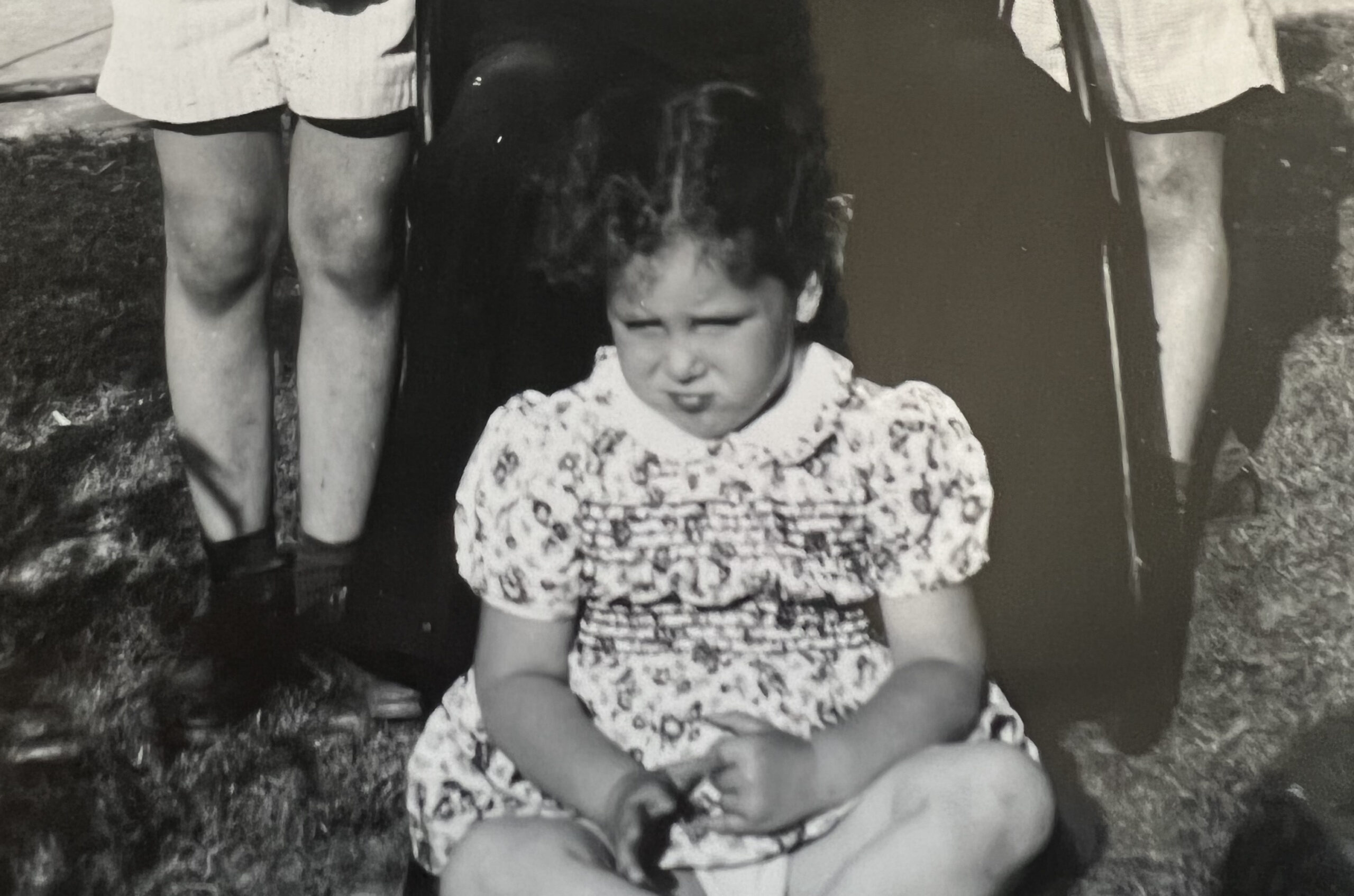
Lynn Carole Lester is born on June 17 in Cleveland, OH.
January 01, 2021
12:00 AM
1948
(to 1950)
At seven years old, she is placed in the program, "Major Work," for students with high IQ and attends classes at Case Western Reserve University.
January 01, 2021
12:00 AM
1954
At age 12, Hershman Leeson realizes humans and technology can make beautiful things together when she and one of her drawings are transformed by a Xerox machine.
January 01, 2021
12:00 AM
1963
Hershman Leeson receives a B.A. in Education, Museum Administration, and Fine Arts from Case Western Reserve University in Cleveland, OH.
January 01, 2021
12:00 AM
1965
Hershman Leeson spends five weeks in an oxygen tent with cardiomyopathy. She begins working with a ball of wax by her bed, which leads her to make "Breathing Machines" and "Giggling Machines." (Click to read more ↗)
January 01, 2021
12:00 AM
Project
Breathing Machines
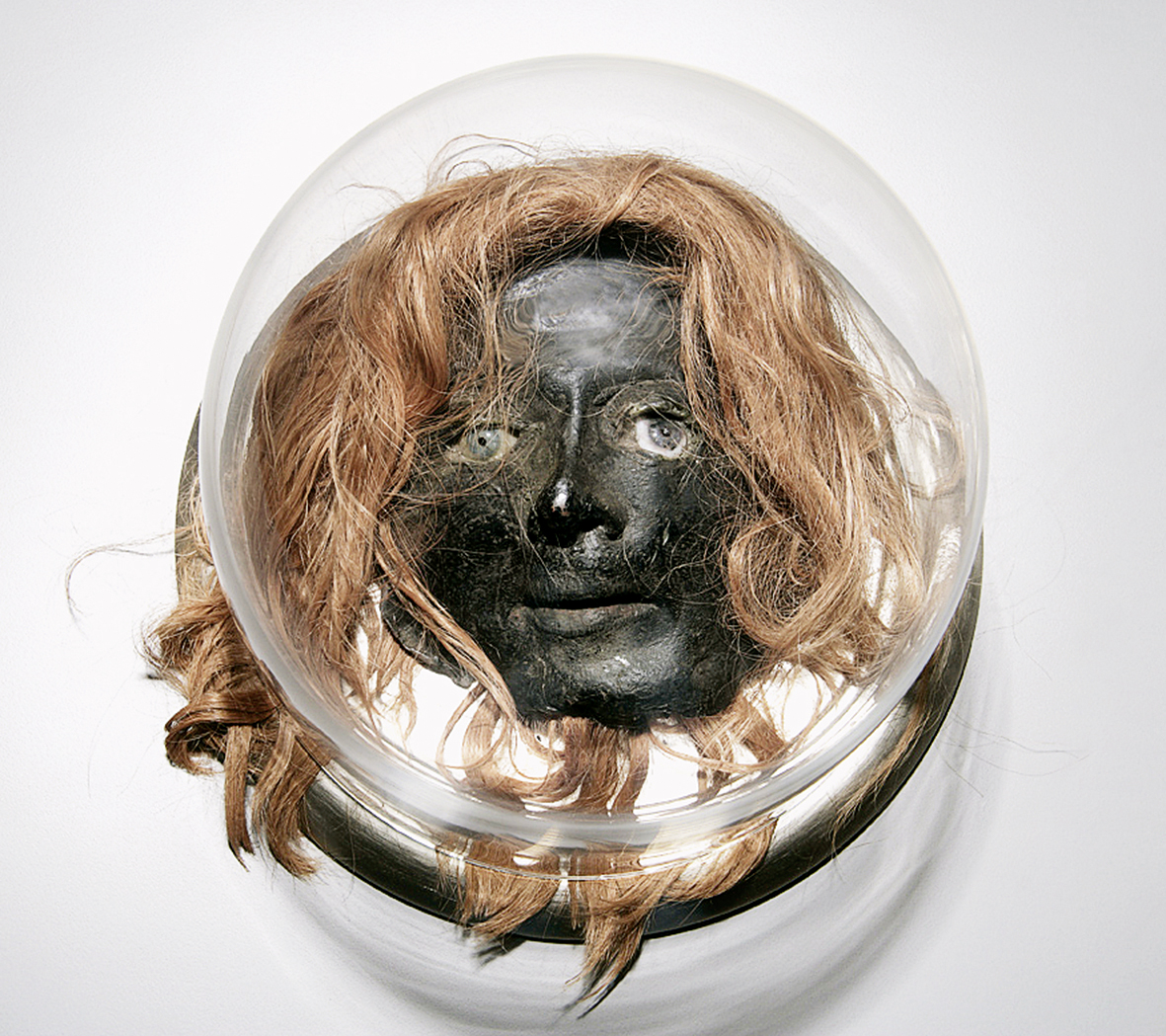
Click to read more →
January 01, 2021
12:00 AM
Project
Giggling Machines
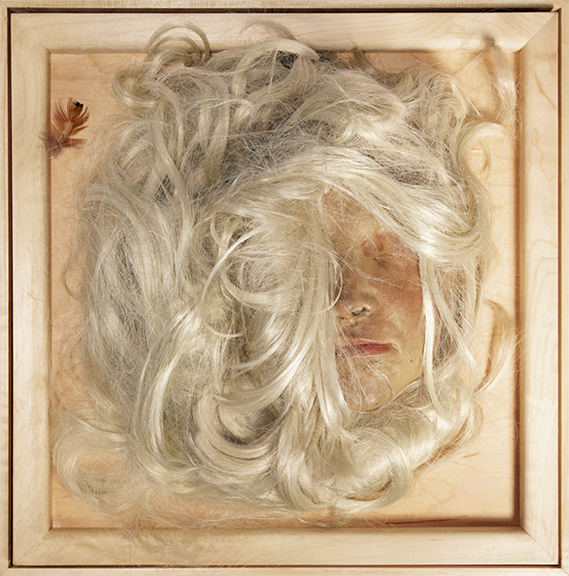
Click to read more →
January 01, 2021
12:00 AM
Project
Self Portrait as Another Person
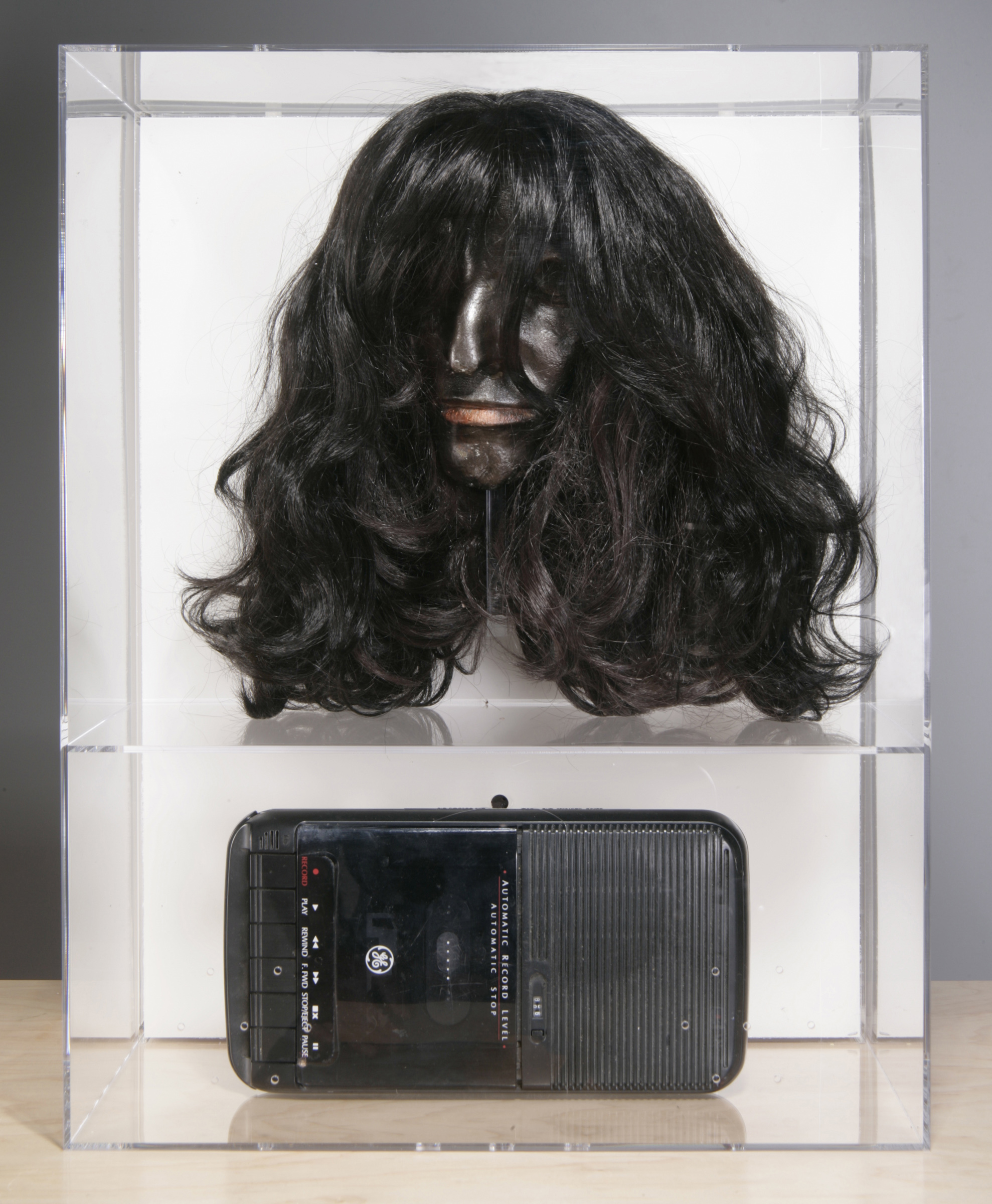
Click to read more →
January 01, 2021
12:00 AM
1966
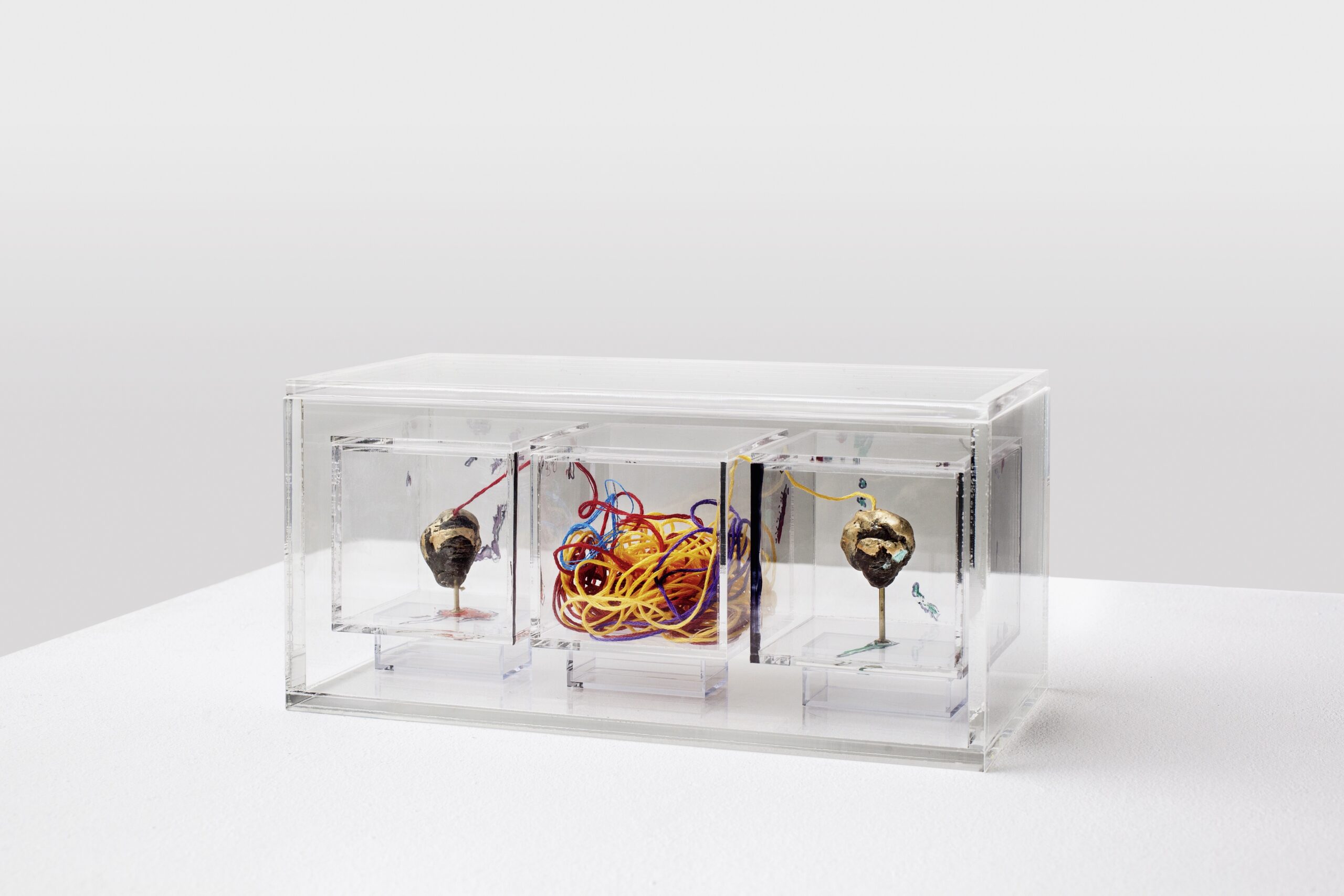
Still under the oxygen tent and recovering from heart failure, Hershman Leeson creates a piece titled "Conversation." In 2023, reflecting on this work, she says: "Looking at it four decades later, it can be interpreted as anticipating the internet." Pictured here is a 2014 reconstruction of the original.
January 01, 2021
12:00 AM
1968
(to 2013)
Hershman Leeson begins interviewing over 40 women artists in her living room, using borrowed cameras. It is the only footage of many of these women over the span of several decades. Her goal is to bear witness to the feminist movement, without an idea of the outcome. (Click for more ↗)
January 01, 2021
12:00 AM
Project
!Women Art Revolution
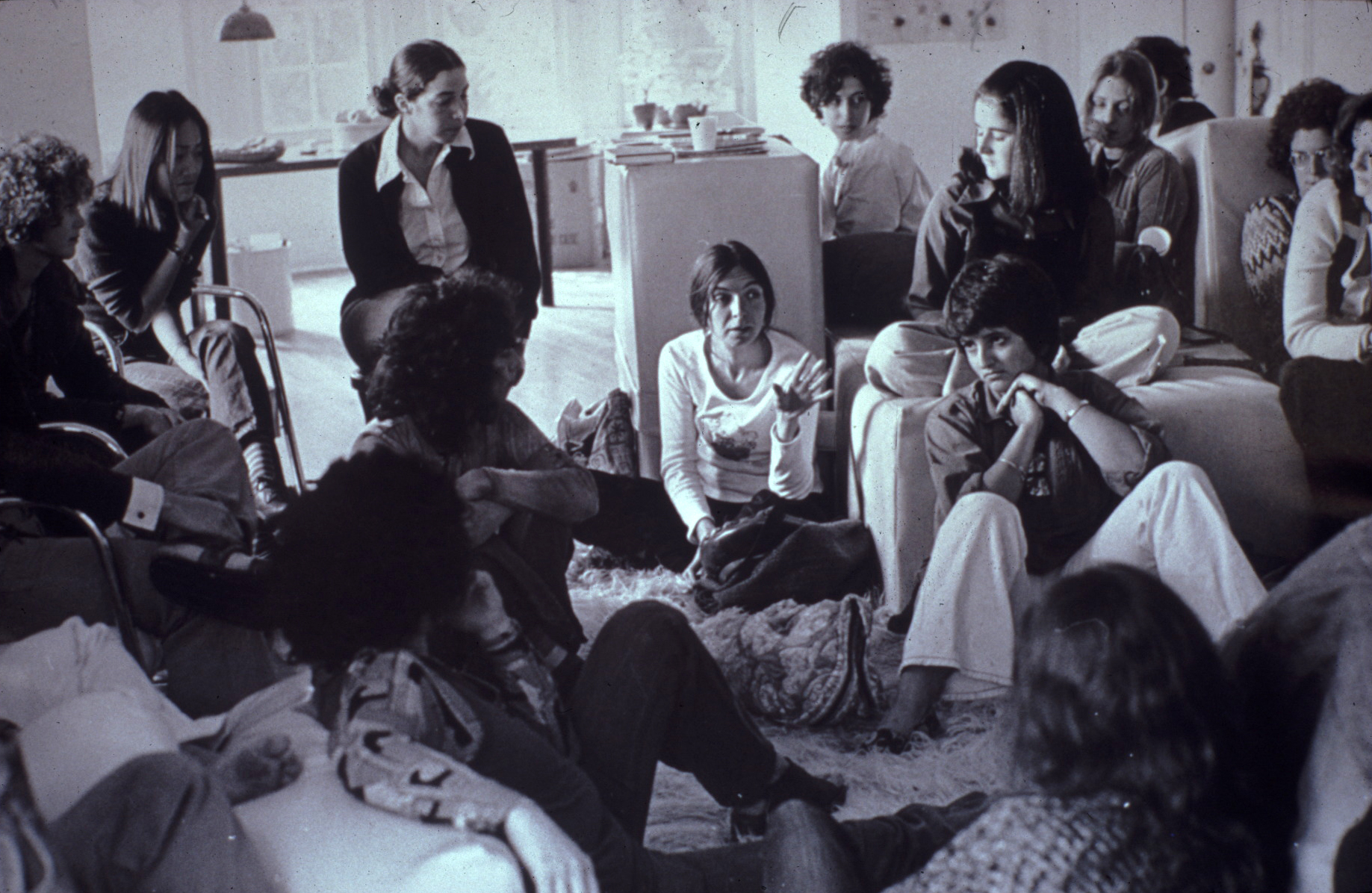
Click to read more →
January 01, 2021
12:00 AM
1968
Hershman Leeson assumes the identities of three fictional critics: Prudence Juris, Gay Abandon, and Herbert Good. The writings are printed in publications ranging from local San Francisco trade magazines to prestigious art journals such as Studio International. She critiques her own work under these names, as well as other female artists who were generally ignored. The published works become her Masters Thesis at San Francisco State University.
January 01, 2021
12:00 AM
1970
(to 1983)
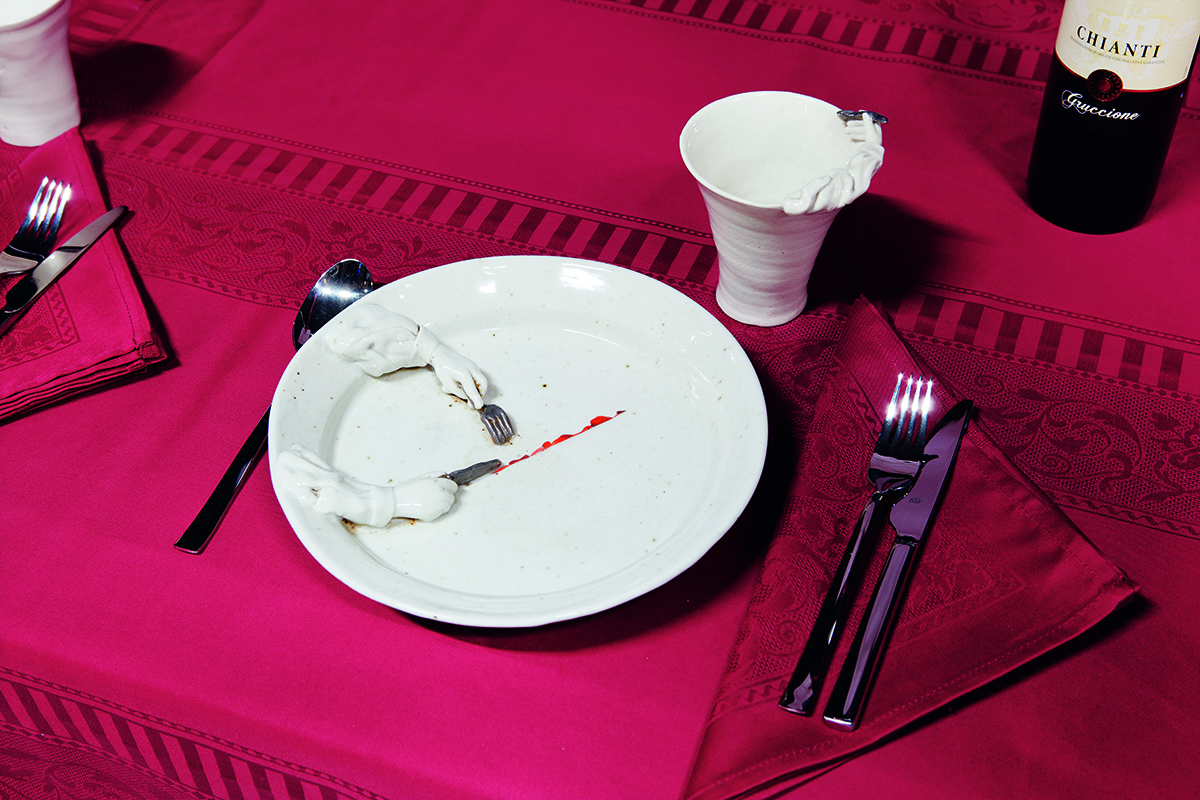
Hershman Leeson hosts “Performance Dinners” where artists are invited to come together and eat thoughtfully prepared “edible portraits” served to them as dinners, with specially conceived plates. Precursor to: Judy Chicago’s Dinner Party (1979).
January 01, 2021
12:00 AM
1972
Berkeley’s University Art Museum offers Hershman Leeson an exhibition. Drawings and wax figures that feature sensors and the sound of breathing (“Breathing Machines”) are installed. The exhibition is closed in 24 hours by curators who state that “the work uses sound and sound isn’t art.” 53 years later, it is noted that these works are some of the first that used media in their completion.
January 01, 2021
12:00 AM
1972
In response to the Berkeley Museum closure, Hershman Leeson rents two rooms in the Dante Hotel with artist Eleanor Coppola. People can visit their installations 24-hours a day by getting a key at the front desk. Hershman Leeson’s installation features breathing sounds. Precursor to: site-specific installation, hotel art fairs, virtual reality.
January 01, 2021
12:00 AM
Project
The Dante Hotel
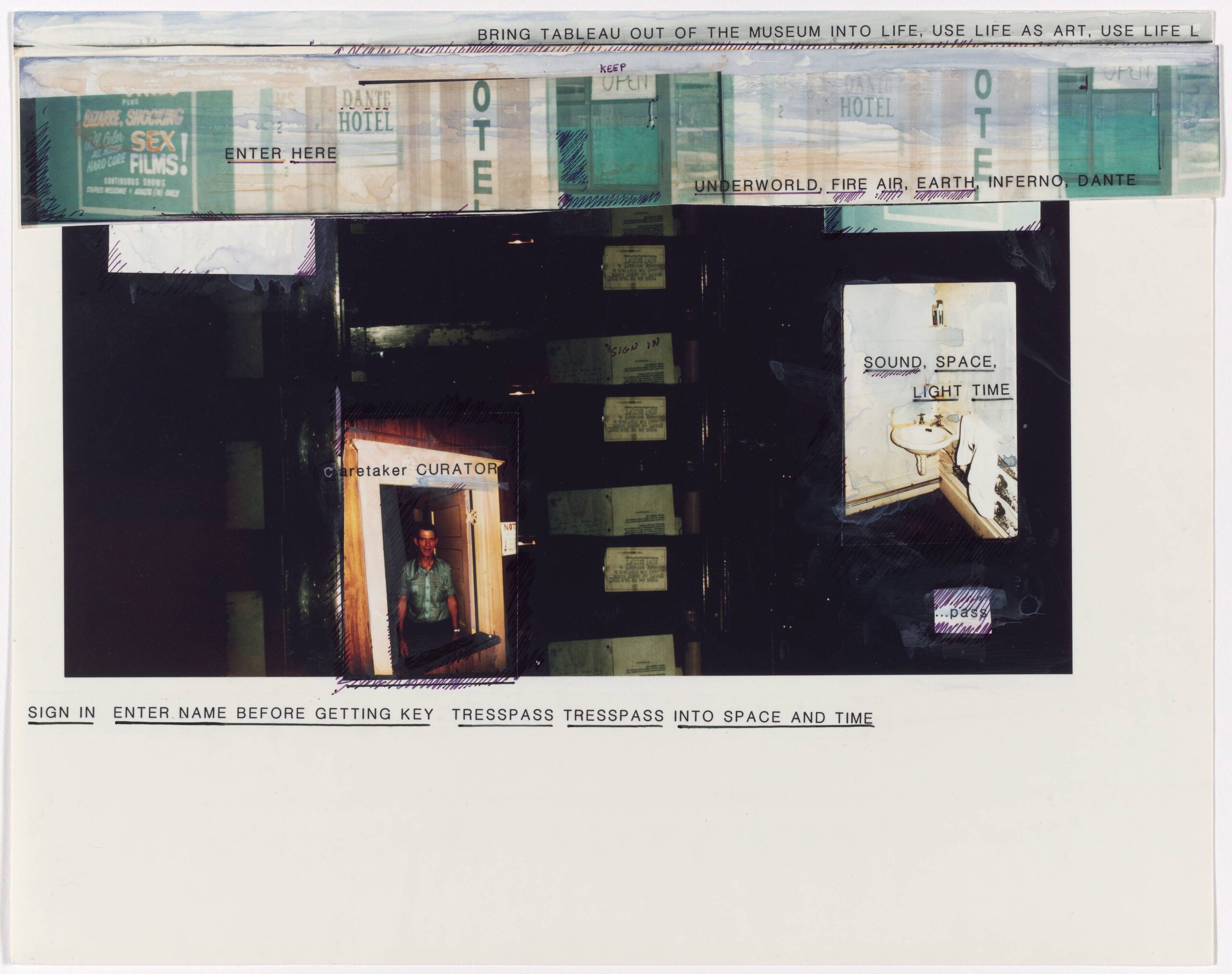
Click to read more →
January 01, 2021
12:00 AM
1973
The Dante Hotel exhibition is closed by police when someone mistakes the body parts in the art for a murder victim.
January 01, 2021
12:00 AM
1973
(to 1979)
Roberta Breitmore, a fictional character who interacts with real life, checks into the Dante Hotel. Roberta gets a credit card (even though Lynn Hershman cannot) and participates in daily life, including seeing psychiatrists and searching for roommates while she defines herself as an archetype of a woman during that time frame. Over the next several years, Hershman Leeson hires three dancers as multiples for Roberta. Concurrent with: Adrian Piper “The Mythic Being” (1973-75); Precursor to: Cindy Sherman’s “Untitled Film Stills” (1977-80), performance art, and identity art.
January 01, 2021
12:00 AM
Project
Roberta Breitmore
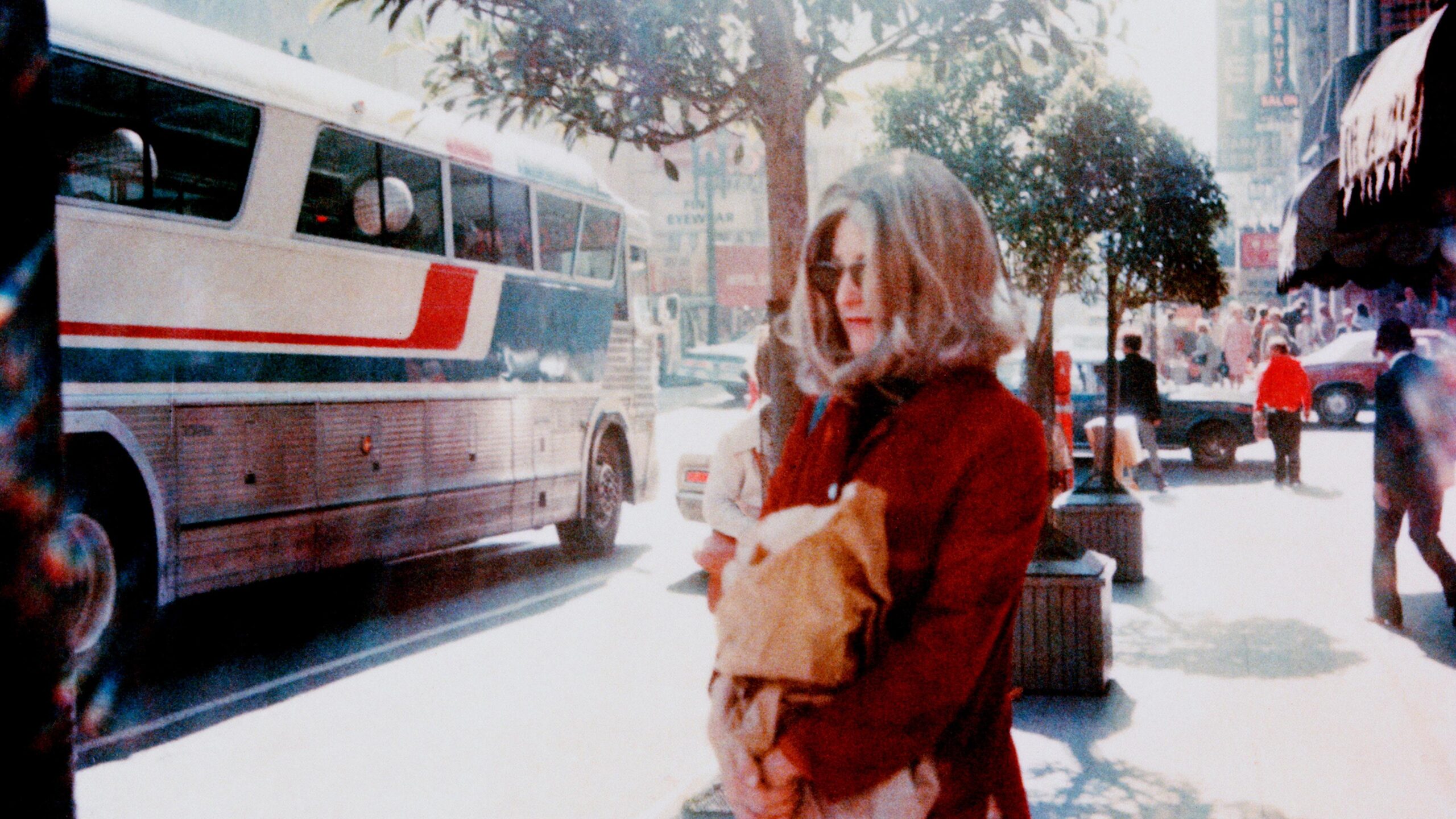
Click to read more →
January 01, 2021
12:00 AM
1974
(to 1978)
Hershman Leeson founds the "Floating Museum," a roving exhibition space that, over 4 years, exhibits the work of more than 350 artists working in media not yet accepted by galleries and museums. Precursor to: CreativeTime, PS1, site-specific installation. (Click for more ↗️)
January 01, 2021
12:00 AM
Project
The Floating Museum
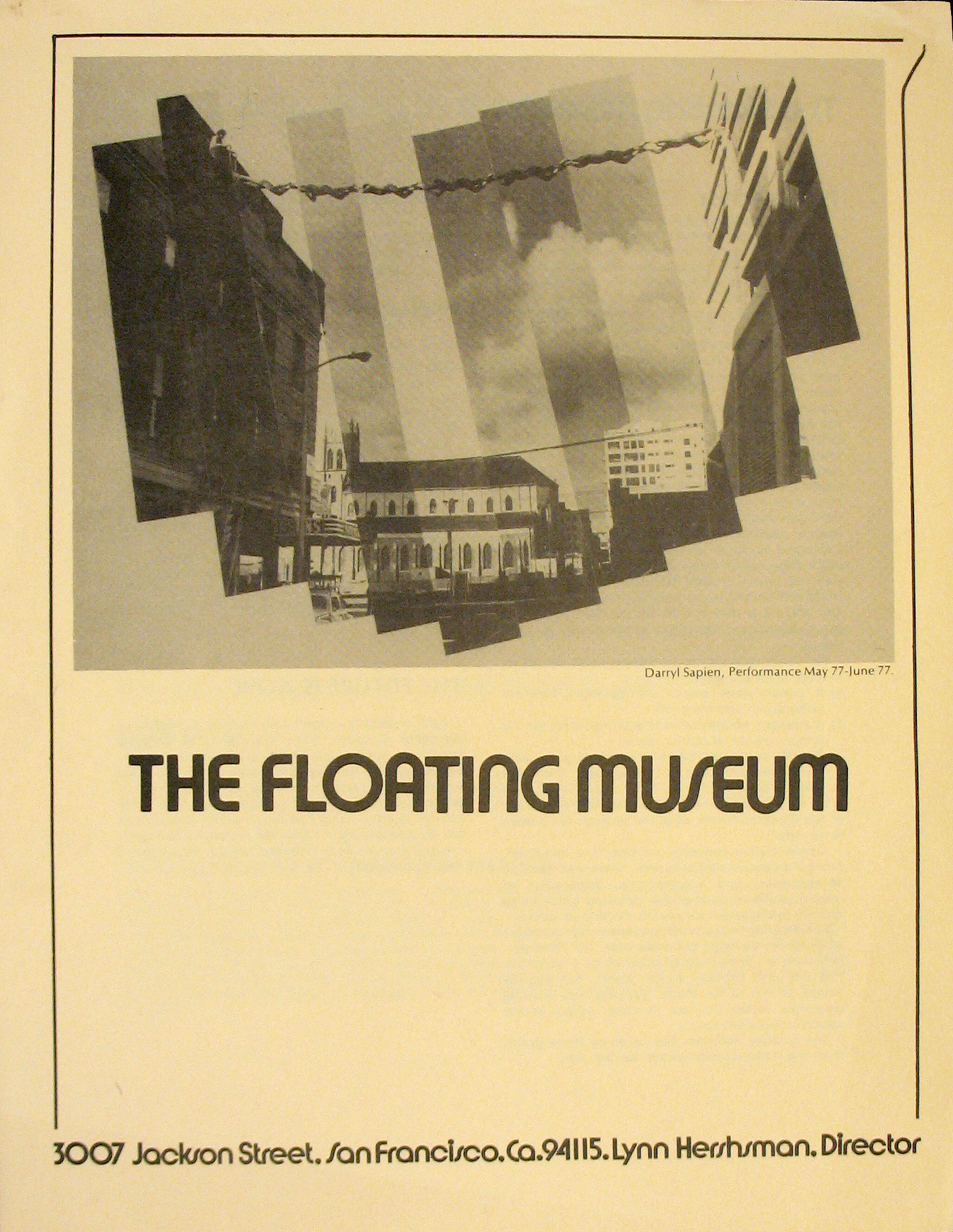
Click to read more →
January 01, 2021
12:00 AM
1976
Hershman Leeson creates a series of 25 window displays for the Bonwit Teller department store in New York, which remain on view from October 28 until November 2, 1976. These multimedia installations incorporate photography, film, video, computers, tape recorders, mirrors, steam, holography, and live actors, as well as Bonwit Teller mannequins and clothing.
January 01, 2021
12:00 AM
Project
Bonwit Teller Windows
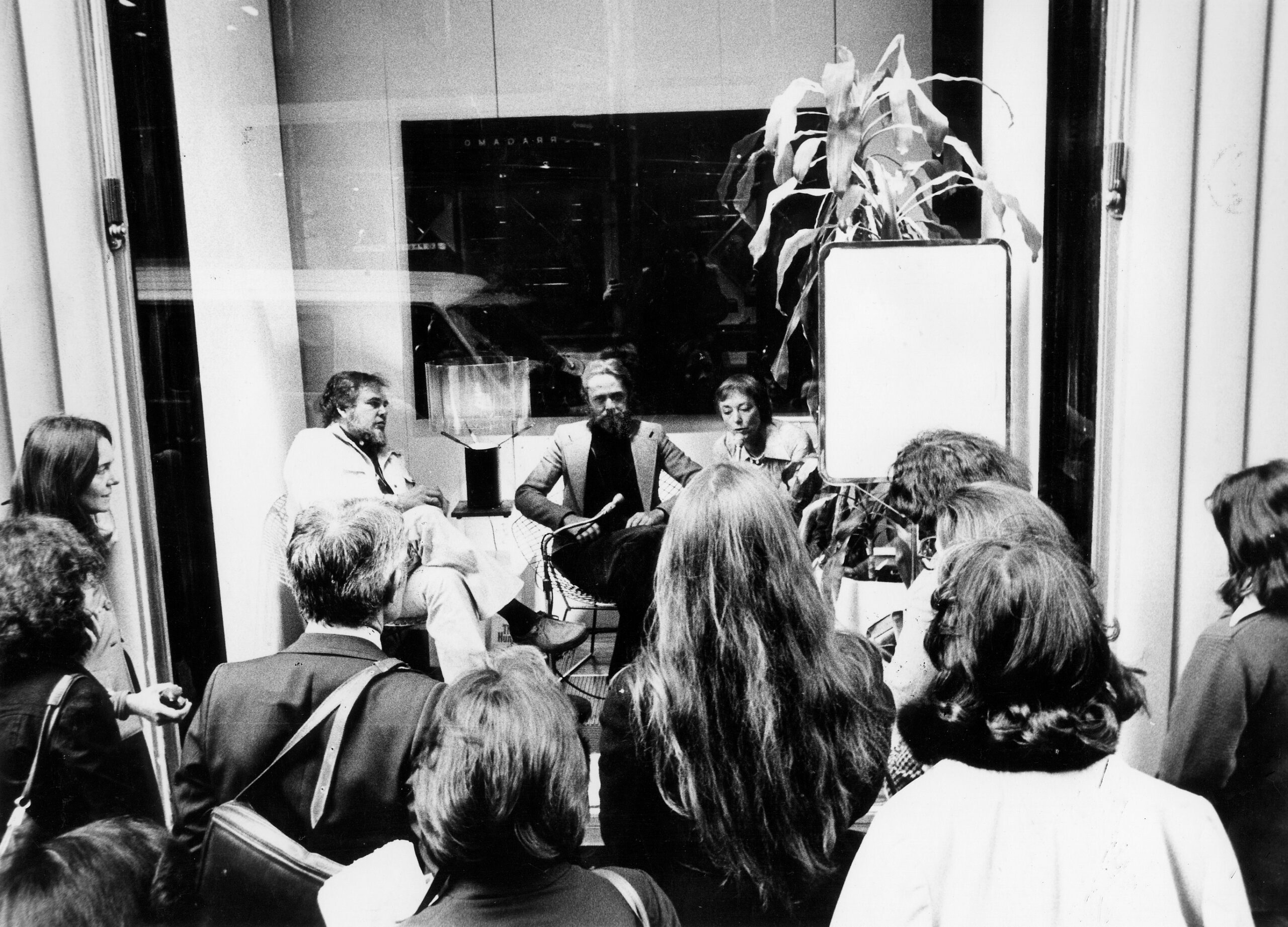
Click to read more →
January 01, 2021
12:00 AM
1978
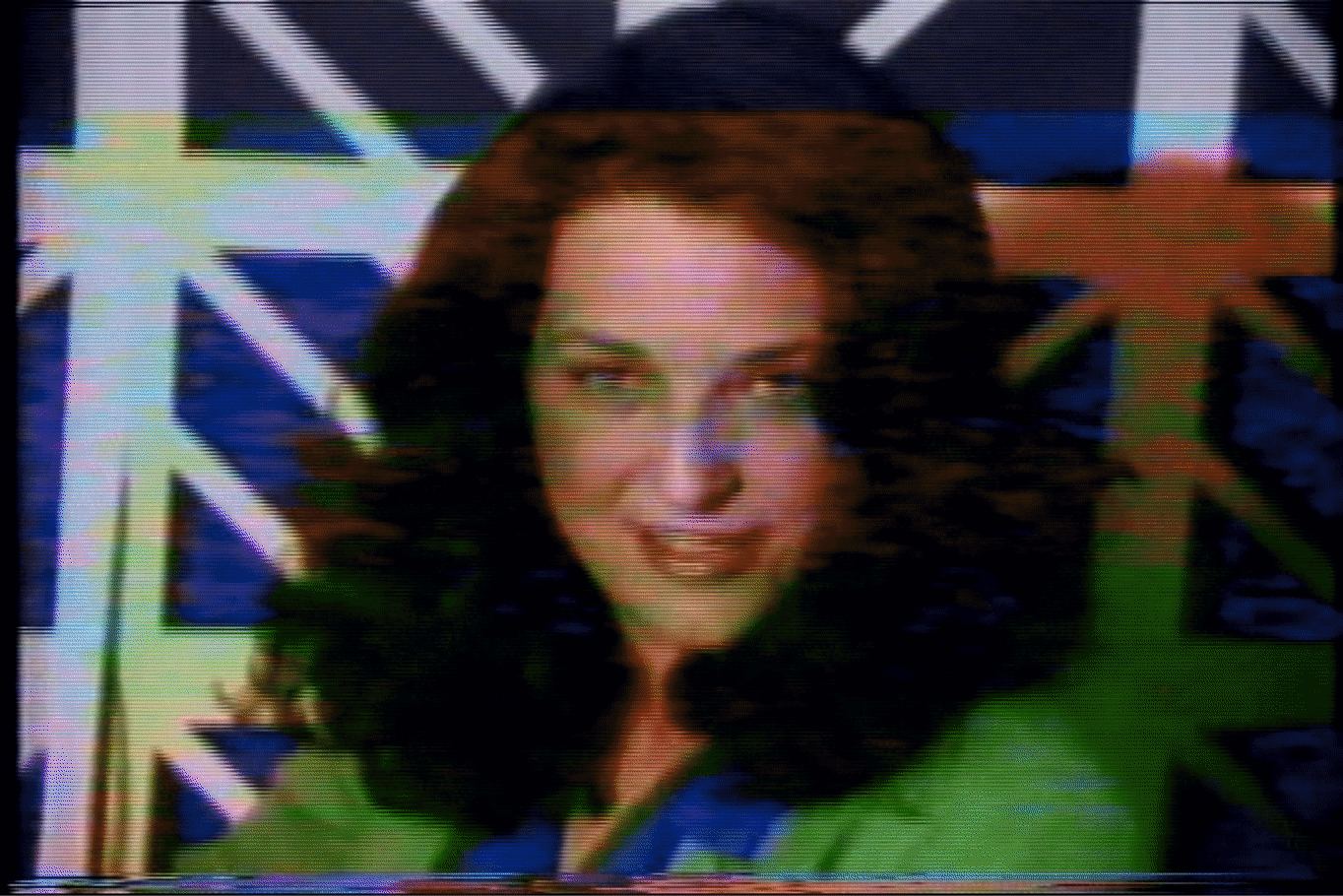
"A Commercial For Myself," a one-minute “portrait” of Hershman Leeson, screens on public television. Precursor to: Marilyn Minter's "Food Porn" commercial (1990).
January 01, 2021
12:00 AM
1979
Roberta Breitmore is exorcized at the Palazzo dei Diamanti in Ferrara, Italy, in the crypt of Lucrezia Borgia.
January 01, 2021
12:00 AM
1983
Hershman Leeson embraces computers as a contemporary art medium. In the future, she will refer to the work made before this point as BC (Before Computers). She will refer to the work she makes after this point as AD (After Digital).
January 01, 2021
12:00 AM
1984
As an extension of her work in the Dante Hotel, Hershman Leeson’s piece “Lorna” is the first interactive video art LaserDisc. Viewers are able to control Lorna, a middle-aged agoraphobic, and lead her to three possible outcomes. The work is groundbreaking in its incorporation of time, video, and interactivity.
January 01, 2021
12:00 AM
Project
Lorna
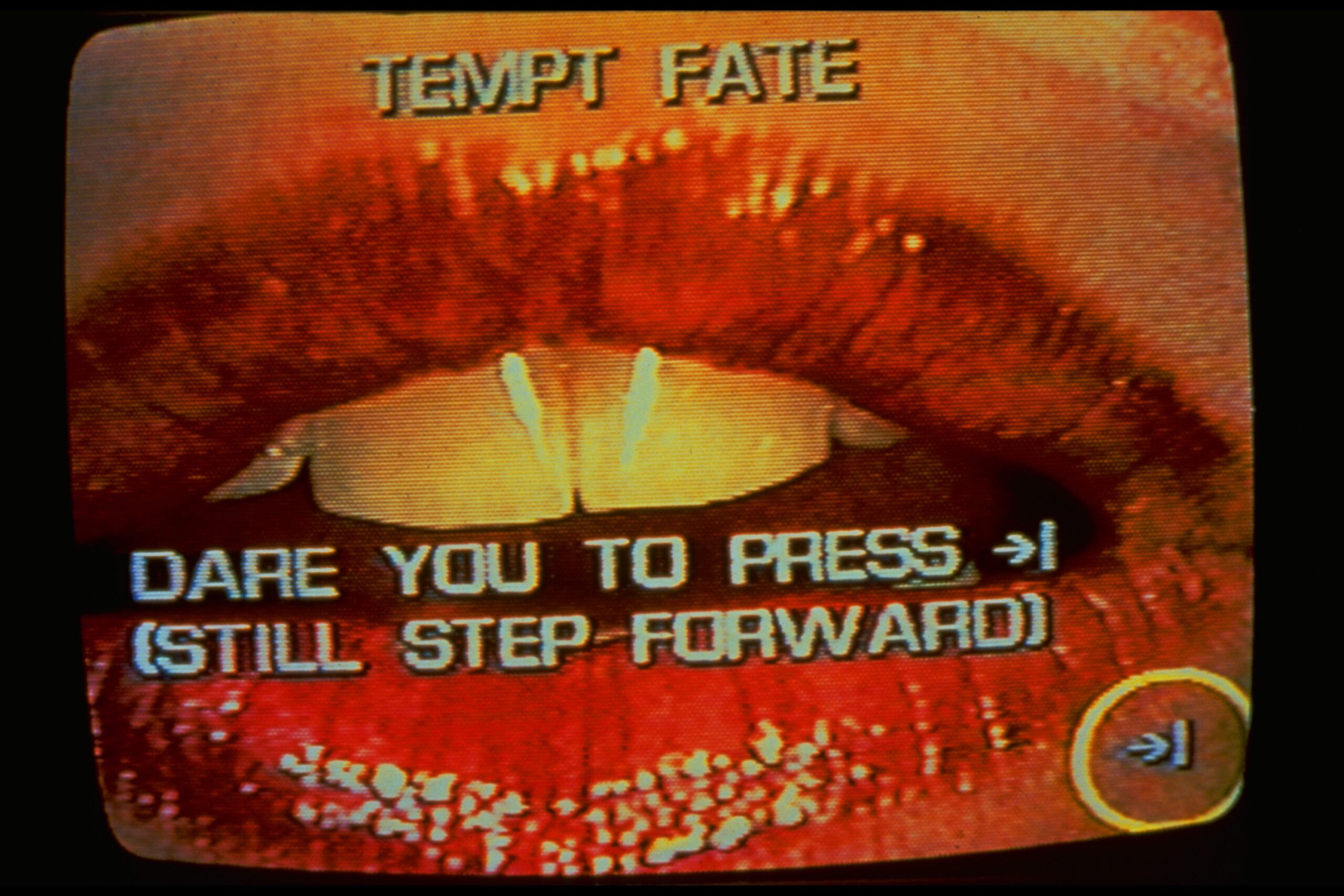
Click to read more →
January 01, 2021
12:00 AM
1984
Hershman Leeson’s piece “Deep Contact” is the first artwork to include a touch screen. Viewers can touch a woman, Marion, and create futures for her, freed from hierarchy and history. Influenced by Duchamp, Cage, and others, the piece makes visceral the ways men might control women and turn them into objects–but the outcomes do not not always uphold that power dynamic. The videodisk installation is a collaboration with Sarah Roberts. Precursor to: wide-spread use of touch screens. Touch screens appear in games and phones in the 1990s; Apple brings touch screen technology to the mainstream with the iPhone in 2007.
January 01, 2021
12:00 AM
Project
Deep Contact
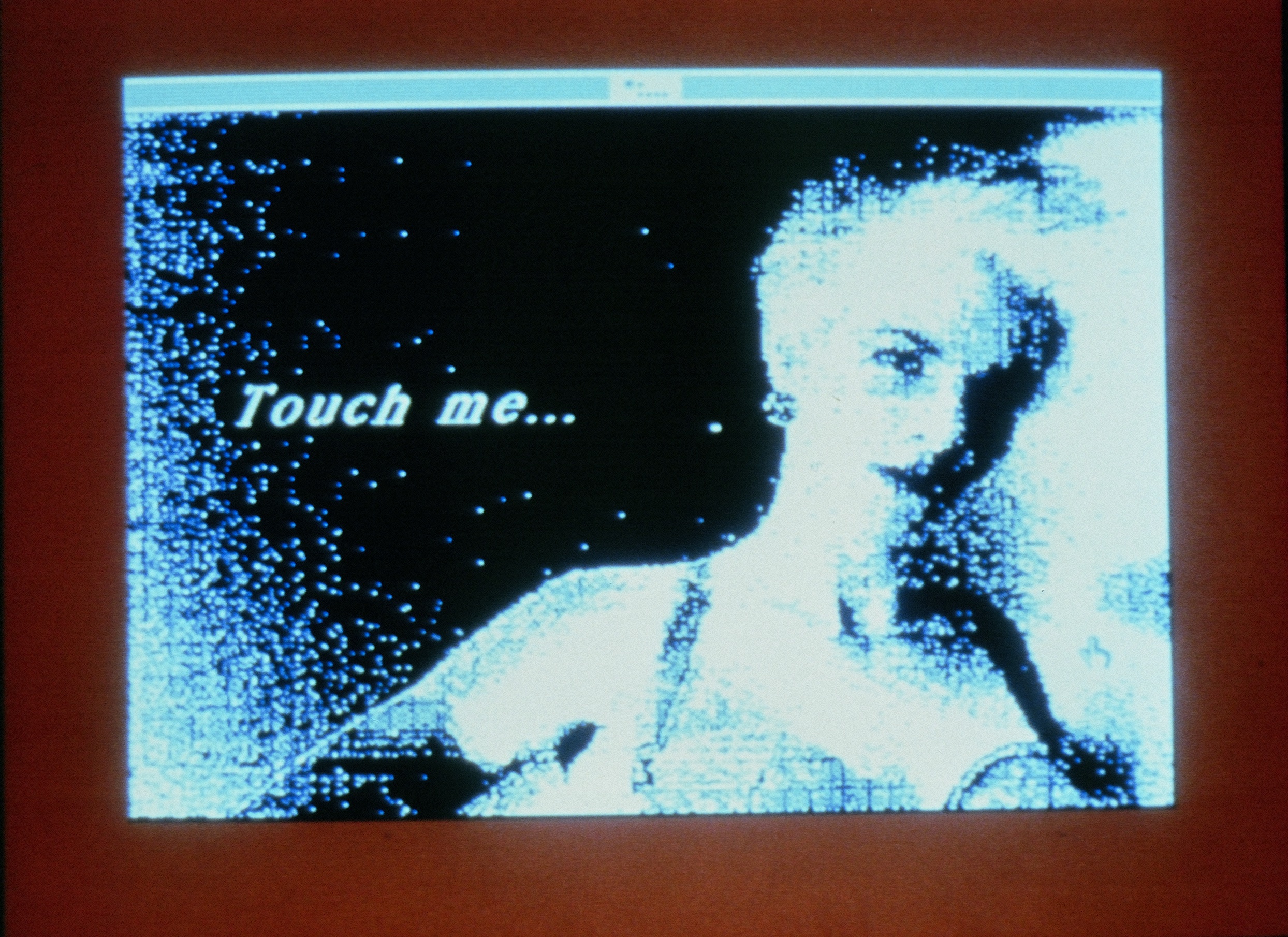
Click to read more →
January 01, 2021
12:00 AM
1984
Hershman Leeson creates images, pre-Photoshop, of cyborgian women called "Phantom Limbs."
January 01, 2021
12:00 AM
Project
Phantom Limb
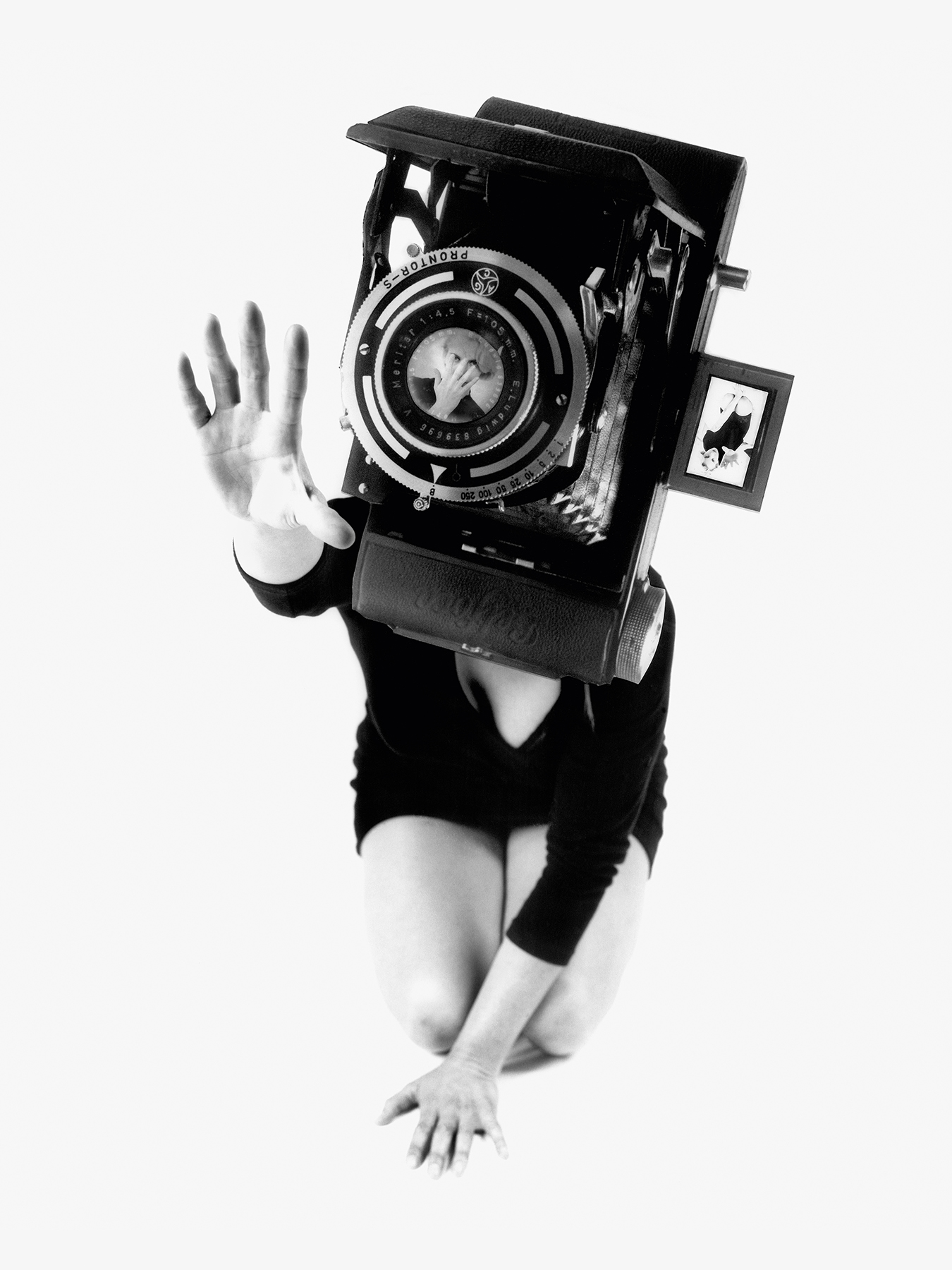
Click to read more →
January 01, 2021
12:00 AM
1984
(ongoing)
Hershman Leeson first shoots “The Electronic Diary,” where she speaks openly to the camera about her history, the present, and the future. Of her work, Hershman Leeson says, “The closer you get to your own truth, the more people you will reach.” This project will continue for over 30 more years. Precursor to: vlogs, tv and social media confessionals.
January 01, 2021
12:00 AM
Project
The Electronic Diaries
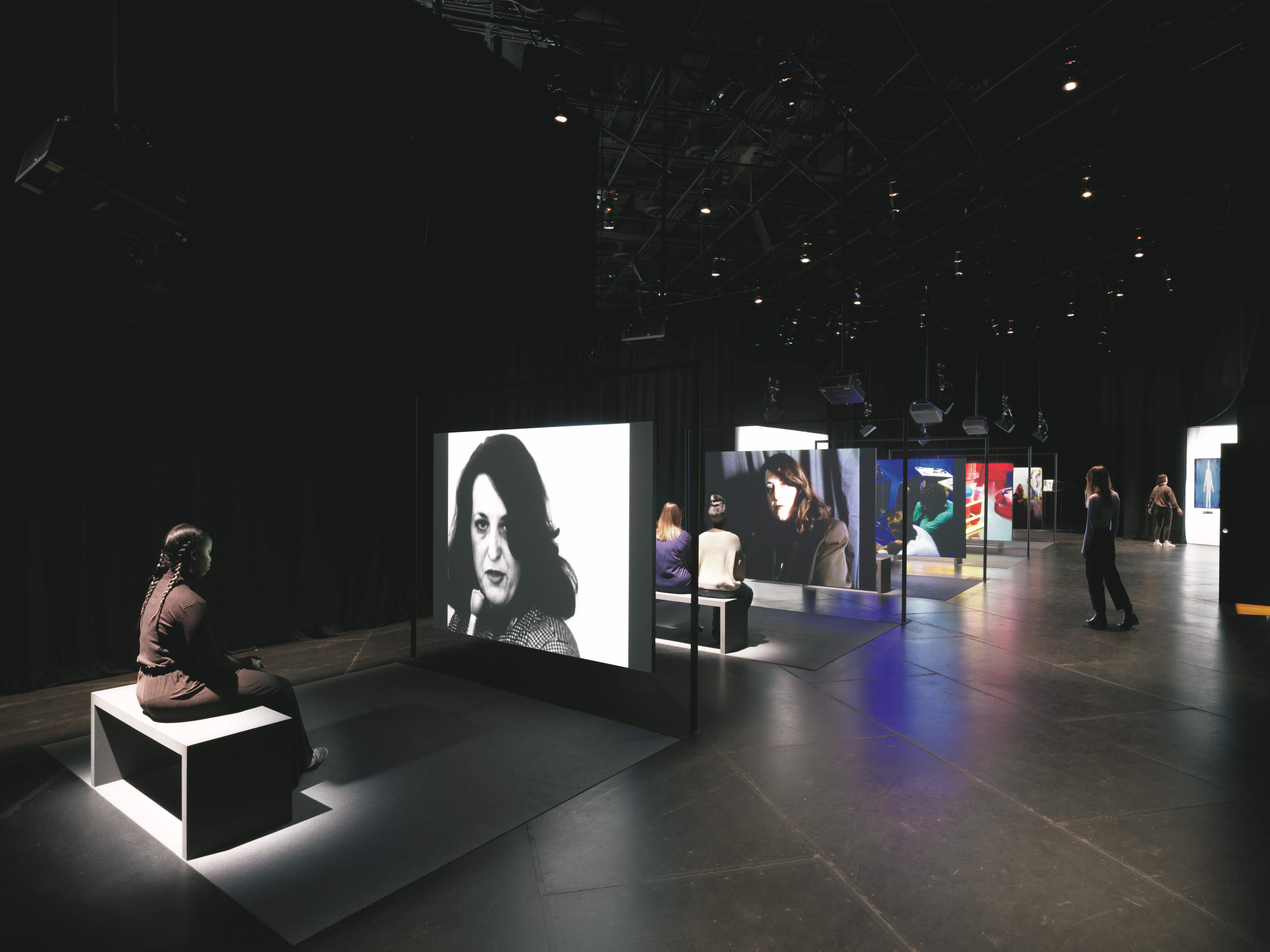
Click to read more →
January 01, 2021
12:00 AM
1990
(to 1994)
Hershman Leeson’s work “America’s Finest” has viewers pull the trigger of an M16 rifle and become the victim of their own action, simultaneously embodying both aggressor and victim by way of a camera installed in the rifle.
January 01, 2021
12:00 AM
Project
America's Finest
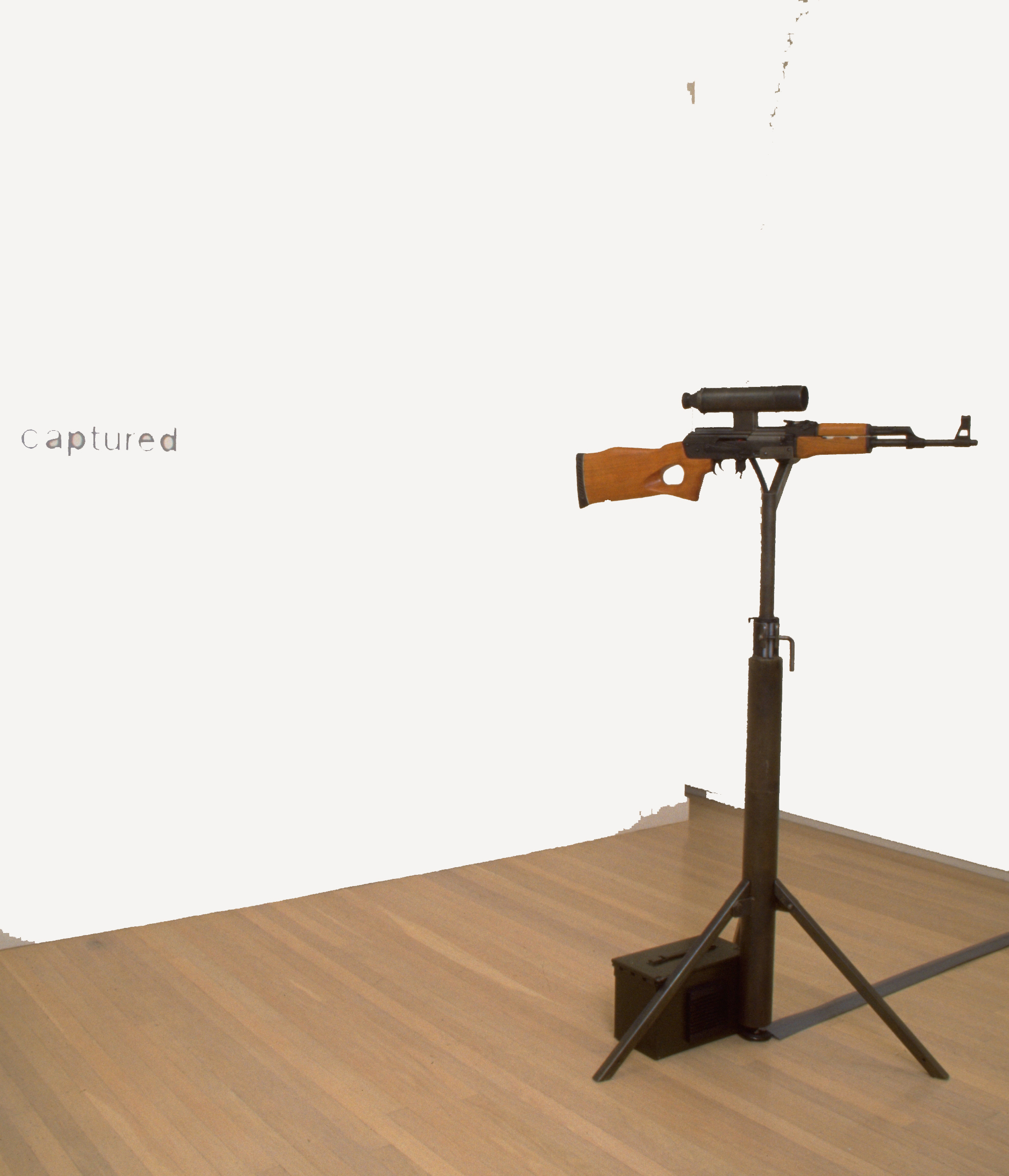
Click to read more →
January 01, 2021
12:00 AM
1993
The videodisk installation “Room of One’s Own” asks viewers to peer into a periscope to see a woman staring back at them. As the viewer focuses on the different objects contained in the space, scenes from the videodisk are shown, accompanied by recorded questions, demands, or protests from the character. Close-up surveillance footage of the viewer’s moving eye, in turn, is captured in real time and appears on a small television monitor inside the room, reversing their gaze. The project is a collaboration with Sarah Roberts.
January 01, 2021
12:00 AM
Project
Room of One's Own
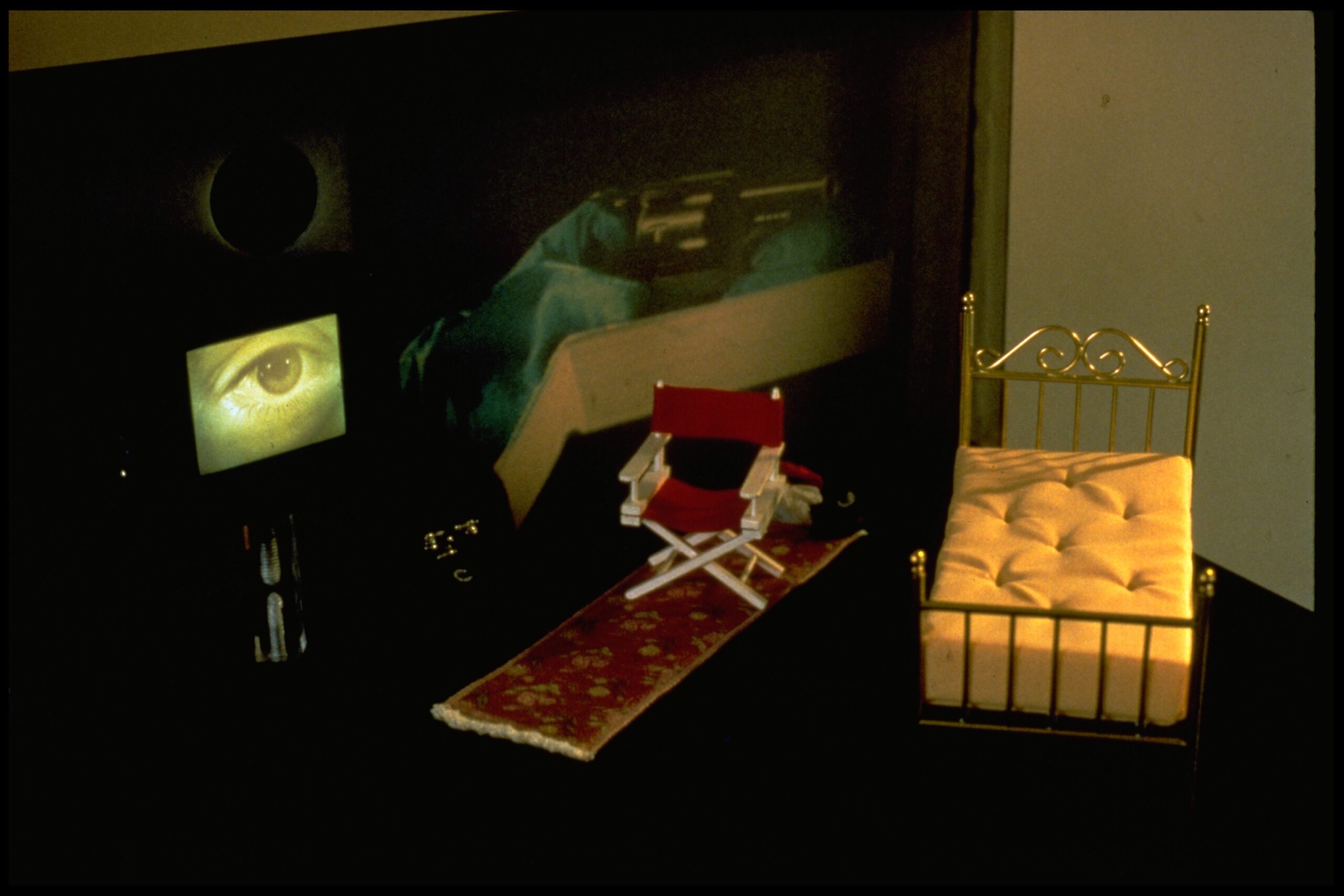
Click to read more →
January 01, 2021
12:00 AM
1993
(to 2004)
Hershman Leeson is hired as a professor of Electronic Arts at the University of California at Davis, where she later is made emeritus.
January 01, 2021
12:00 AM
Early '90s
The Swiss collector Donald Hess visits her studio and acquires everything in it. It is her first major collector and the sale allows her freedom to concentrate on her work.
January 01, 2021
12:00 AM
1993
Hershman Leeson considers the internet as a material for artwork.
January 01, 2021
12:00 AM
1994
First US-based art fair in a hotel, 22 years after the Dante Hotel exhibition.
January 01, 2021
12:00 AM
1996
(to 1998)
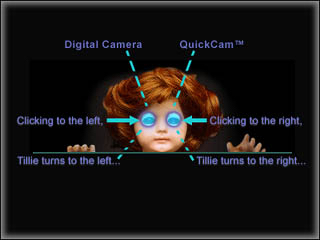
“CyberRoberta” is conceived simultaneously with “Tillie, the Telerobotic Doll.” Both come from Hershman Leeson’s “Dollie Clone” series. When exhibited together, each is programmed to pirate the others’ information, blurring their identities. Both pieces are constructed so that cameras replace the dolls’ eyes: a video camera in the left eye, a webcam in the right eye. By clicking on the “eye con” on the right of each doll’s internet image, users can tele-robotically turn that doll’s head 180 degrees, allowing visitors to her website to survey the room she is in. Viewers become voyeurs as well as virtual cyborgs because they use her eyes as a vehicle for their own remote and extended vision. Precursor to: nanny cams.
January 01, 2021
12:00 AM
Project
Dollie Clone: Tillie
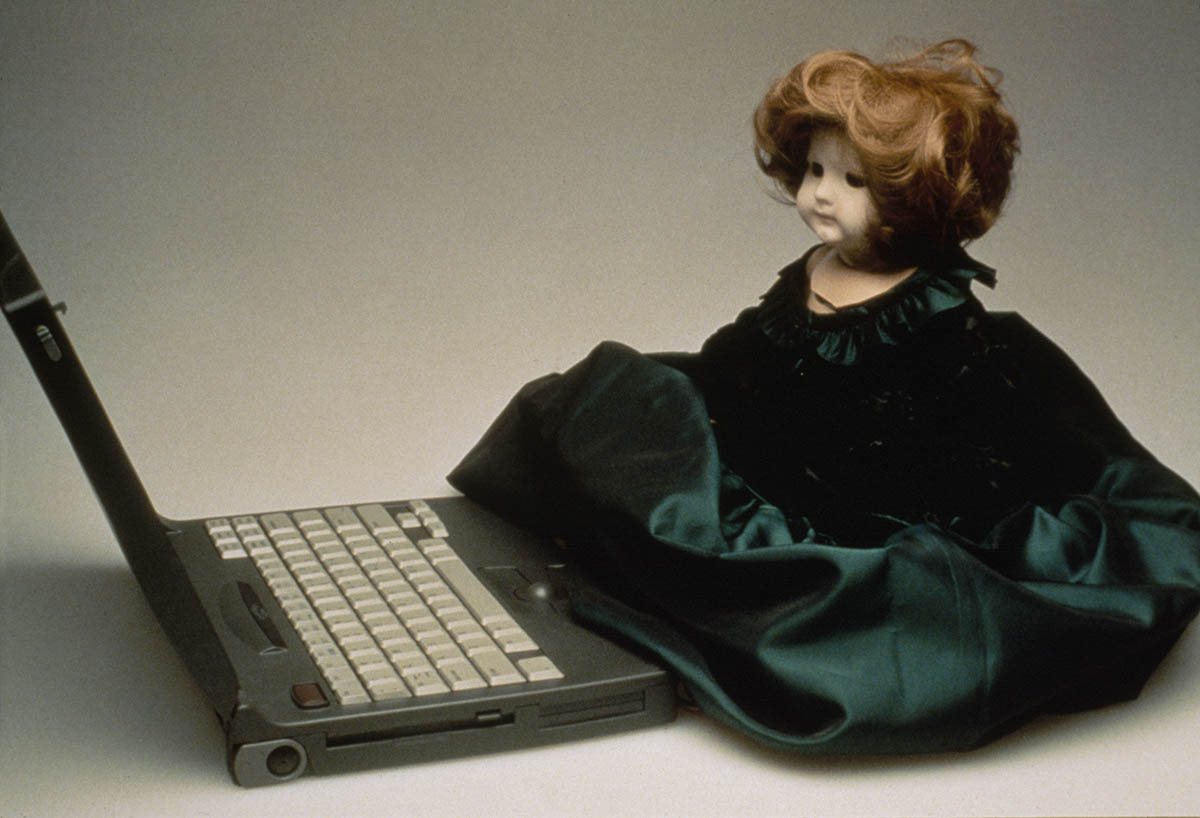
Click to read more →
January 01, 2021
12:00 AM
Project
Dollie Clone: CybeRoberta
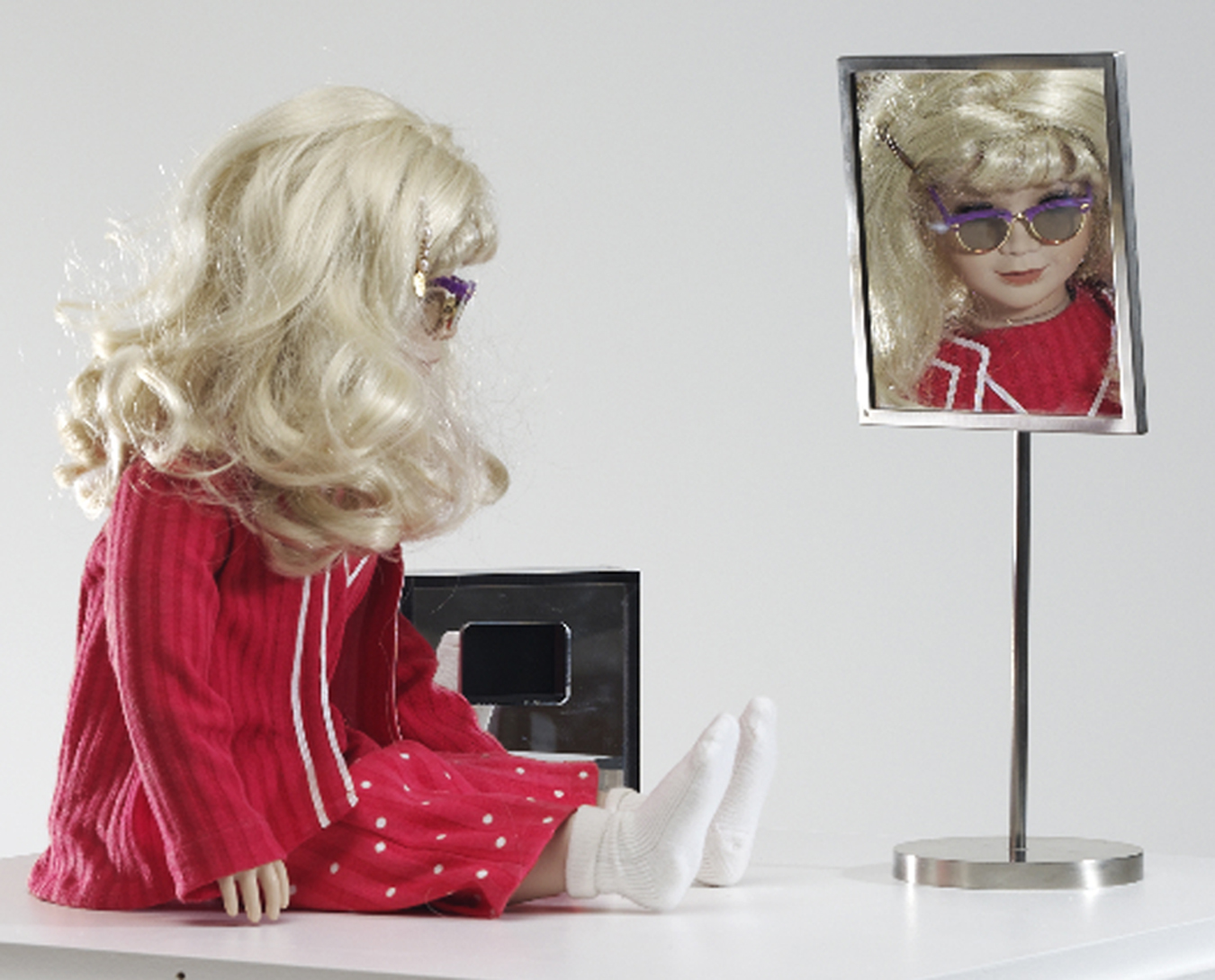
Click to read more →
January 01, 2021
12:00 AM
1996
Hershman Leeson writes, directs, and produces the film “Conceiving Ada” about Ada Lovelace, the author of the first computer program who was unknown for many years. In the process, she makes virtual sets, digitizing and manipulating still photographs taken in Bay Area Victorian inns.
January 01, 2021
12:00 AM
Project
Conceiving Ada
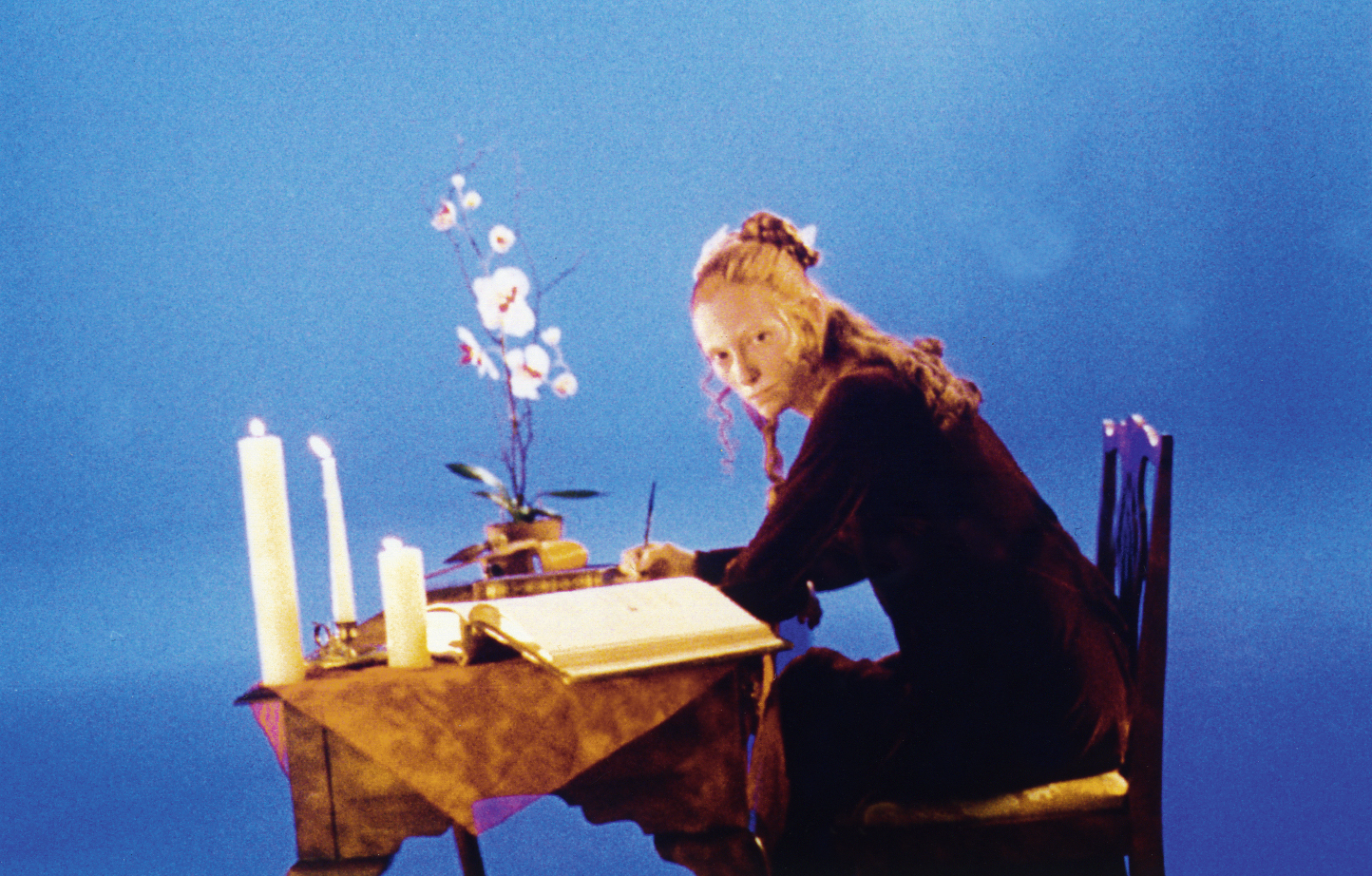
Click to read more →
January 01, 2021
12:00 AM
1997
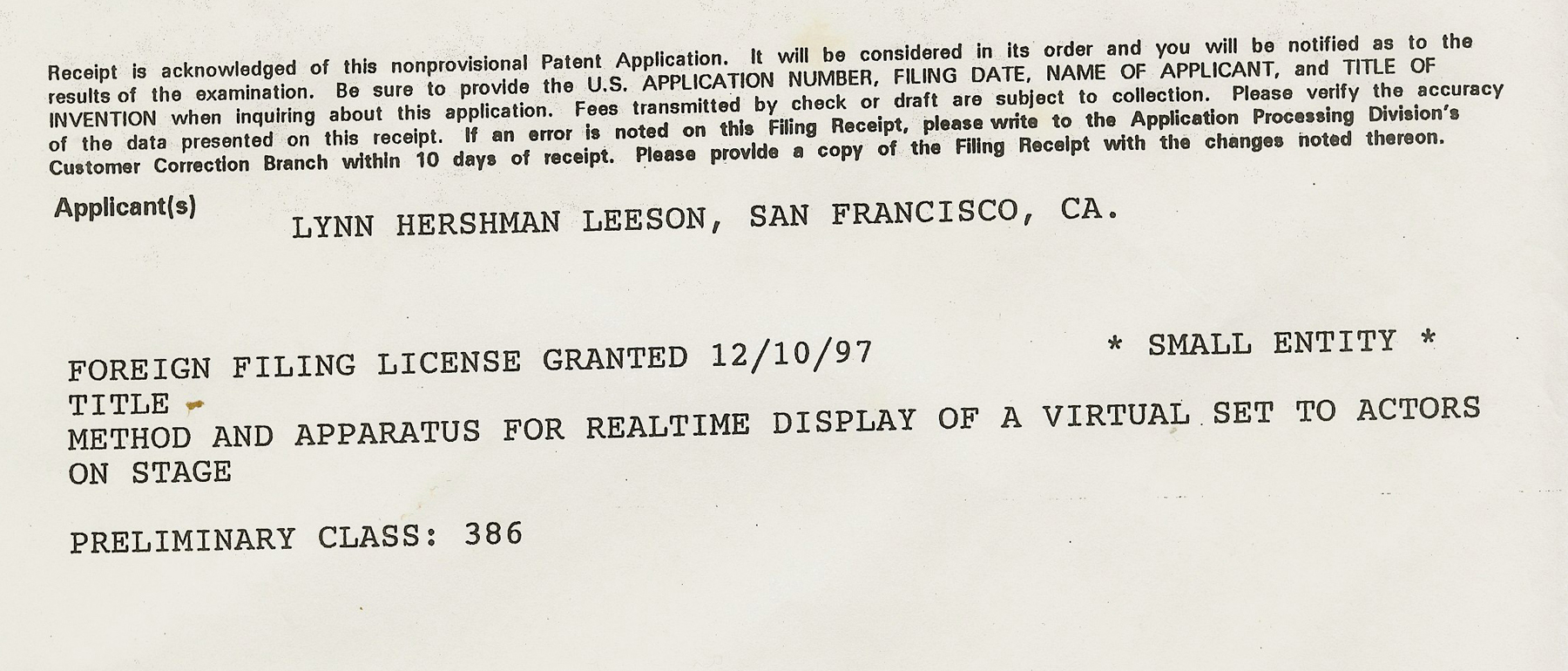
The film "Conceiving Ada" premieres and Hershman Leeson receives a Virtual Set Patent. (Click to read more ↗️)
January 01, 2021
12:00 AM
1997
Understanding the importance of Richard Wallace's Artificial Intelligence Markup Language (AIML), Hershman Leeson partners with him to co-found The Bot Mobile, an LLC to address cell phones and chatbots.
January 01, 2021
12:00 AM
1997
(to 1998)
Hershman Leeson develops the A.I. Chatbot “Agent Ruby.” The viewer types a question and the chatbot answers. “Agent Ruby” is conceived as part of Hershman Leeson’s idea of “expanded cinema” where the character Agent Ruby, from the upcoming film “Teknolust,” travels with viewers out of the theater on their PalmPilots. Precursor to: Siri (2011) and Alexa (2013).
January 01, 2021
12:00 AM
Project
Agent Ruby
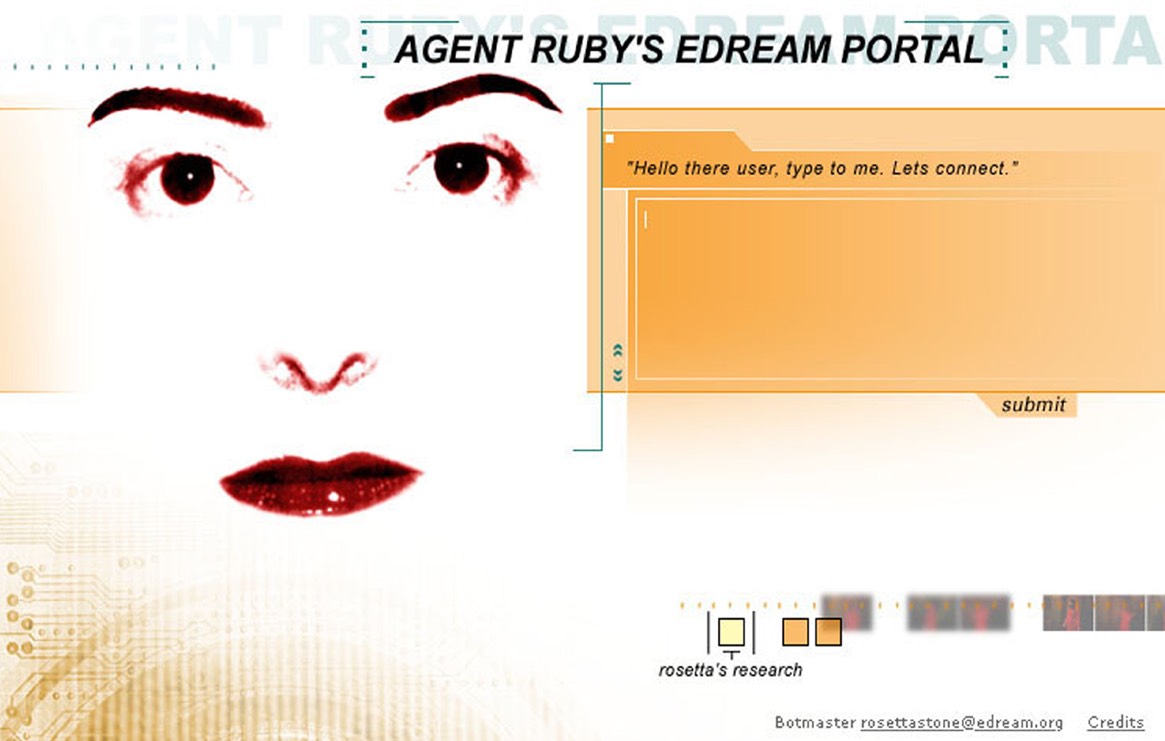
Click to read more →
January 01, 2021
12:00 AM
1999
Hershman Leeson is awarded The Golden Nica for Interactive Art from Ars Electronica in Linz, Austria.
January 01, 2021
12:00 AM
2000
Hershman Leeson releases “Synthia Stock Ticker” which, like its namesake, registers changes in the stock market in real time. A small monitor shows a female character, Synthia, whose 13 possible actions are based on accumulated stock data. As the market goes up, she shops and dances. When the market goes down, she starts drinking. Precursor to: Arts & Electronic Media’s “Art Ticker” (2007).
January 01, 2021
12:00 AM
Project
Synthia Stock Ticker
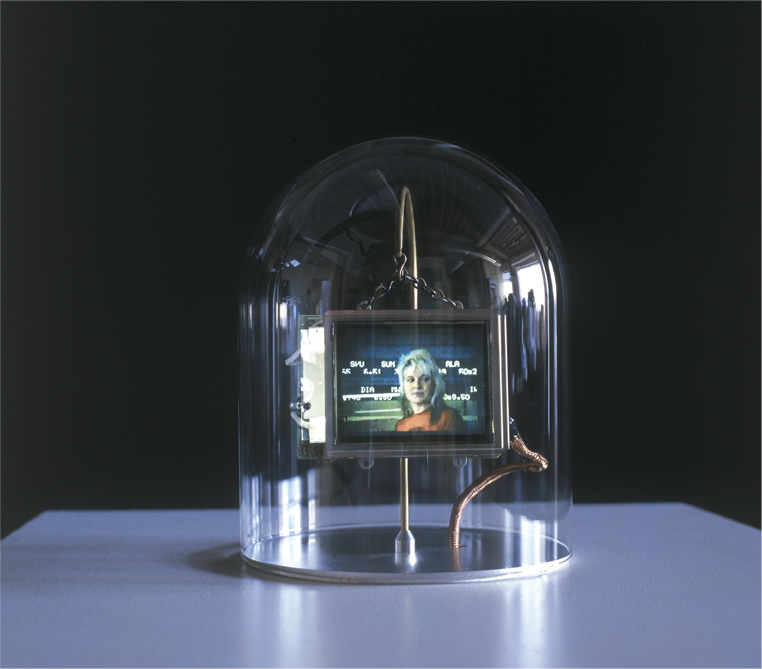
Click to read more →
January 01, 2021
12:00 AM
2001
(ongoing)
SFMOMA debuts “Agent Ruby” on its platform e.space. She still exists on SFMOMA’s website and is the most visited artwork in their collection. (Click to visit ↗)
January 01, 2021
12:00 AM
2002
Hershman Leeson releases “Teknolust,” the first feature film shot on 24p Hi-Def with HD graphic conversion. The film is part of the permanent collection at the Museum of Modern Art. In the film, Rosetta Stone (Tilda Swinton) clones herself three times.
January 01, 2021
12:00 AM
Project
Teknolust
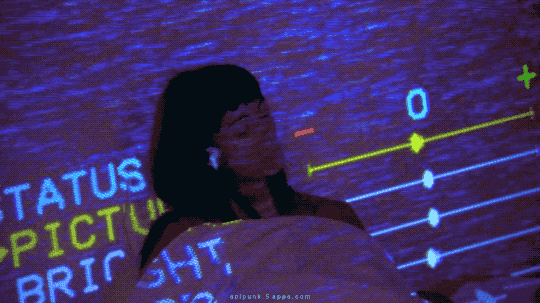
Click to read more →
January 01, 2021
12:00 AM
2002
"Teknolust" is shown at Sundance Film Festival, the Toronto International Film Festival, and the Berlin International Film Festival. Though "Teknolust" is booed at Sundance, it becomes a cult classic which continues to be screened.
January 01, 2021
12:00 AM
2002
Hershman Leeson is awarded the Alfred P. Sloan Foundation's Film Prize for writing and directing "Teknolust."
January 01, 2021
12:00 AM
2004
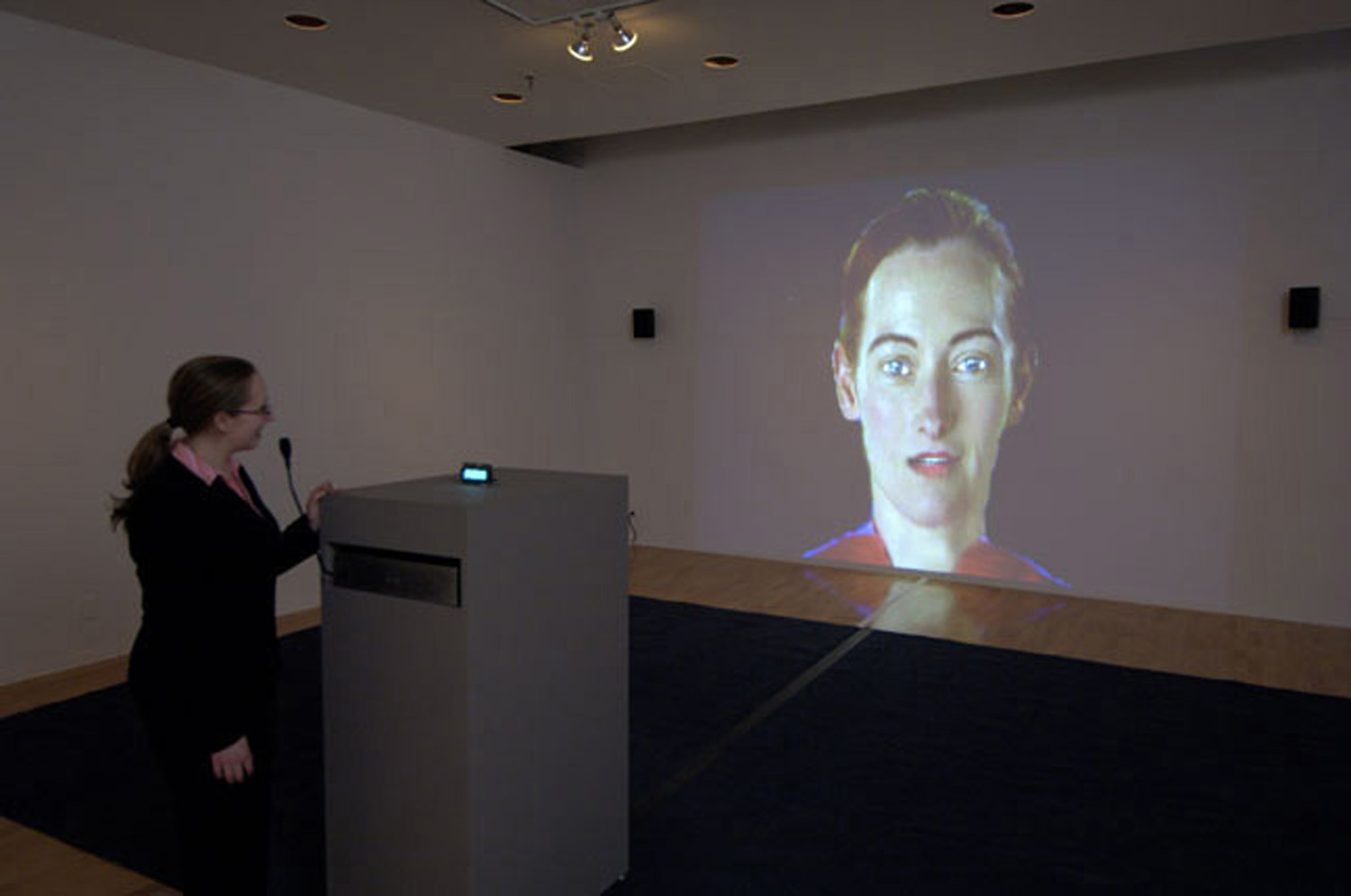
The Chatbot “DiNA,” which talks and understands conversations, is exhibited. Precursor to: Siri (2011) and Stephanie Dinkins’ conversations with Bina48 (2014).
January 01, 2021
12:00 AM
2004
"Lorna" (from 1984) is converted to DVD, allowing the work to live on in a continually accelerating context.
January 01, 2021
12:00 AM
2004
Stanford University Special Collections Library acquires Hershman Leeson’s archive (1966-present), including 16,000+ hours of footage of feminist artists. (Click to visit ↗)
January 01, 2021
12:00 AM
2005
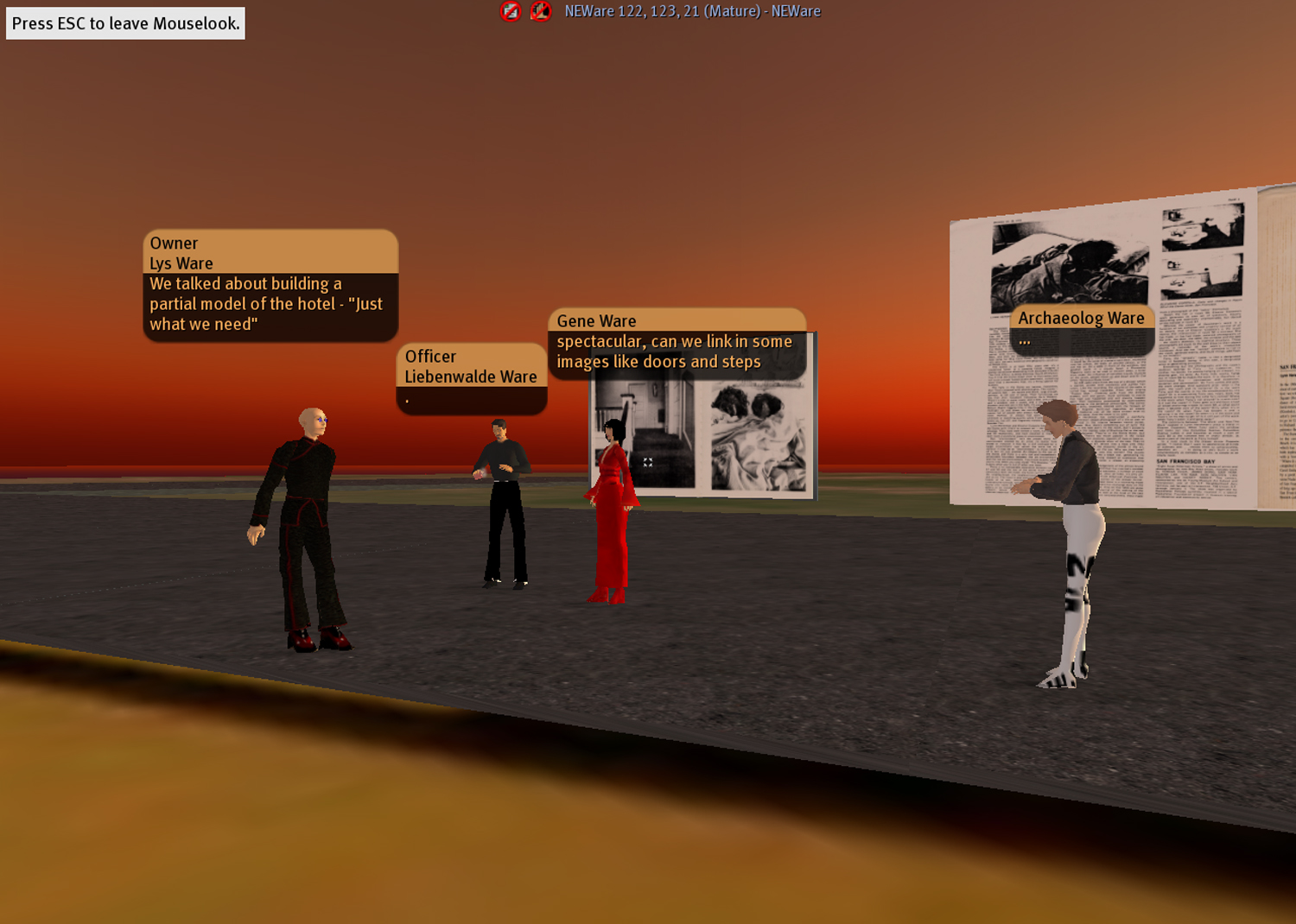
San Francisco’s "Dante Hotel" (1972), complete with Hershman Leeson’s archive until that point, appears in Second Life. The project, "Life Squared," is a museum of the future and “animated archive.” "Life Squared" is archived in the special collections library at Stanford University, where it was developed. (Click to visit ↗️)
January 01, 2021
12:00 AM
2008
Hershman Leeson considers this time period in her career moving forward to be BC (Biological Computing). She begins by working on the large-scale project, "Infinity Engine," which features interviews with leading scientists about the genome project, cloning, and Crispr.
January 01, 2021
12:00 AM
Project
Infinity Engine
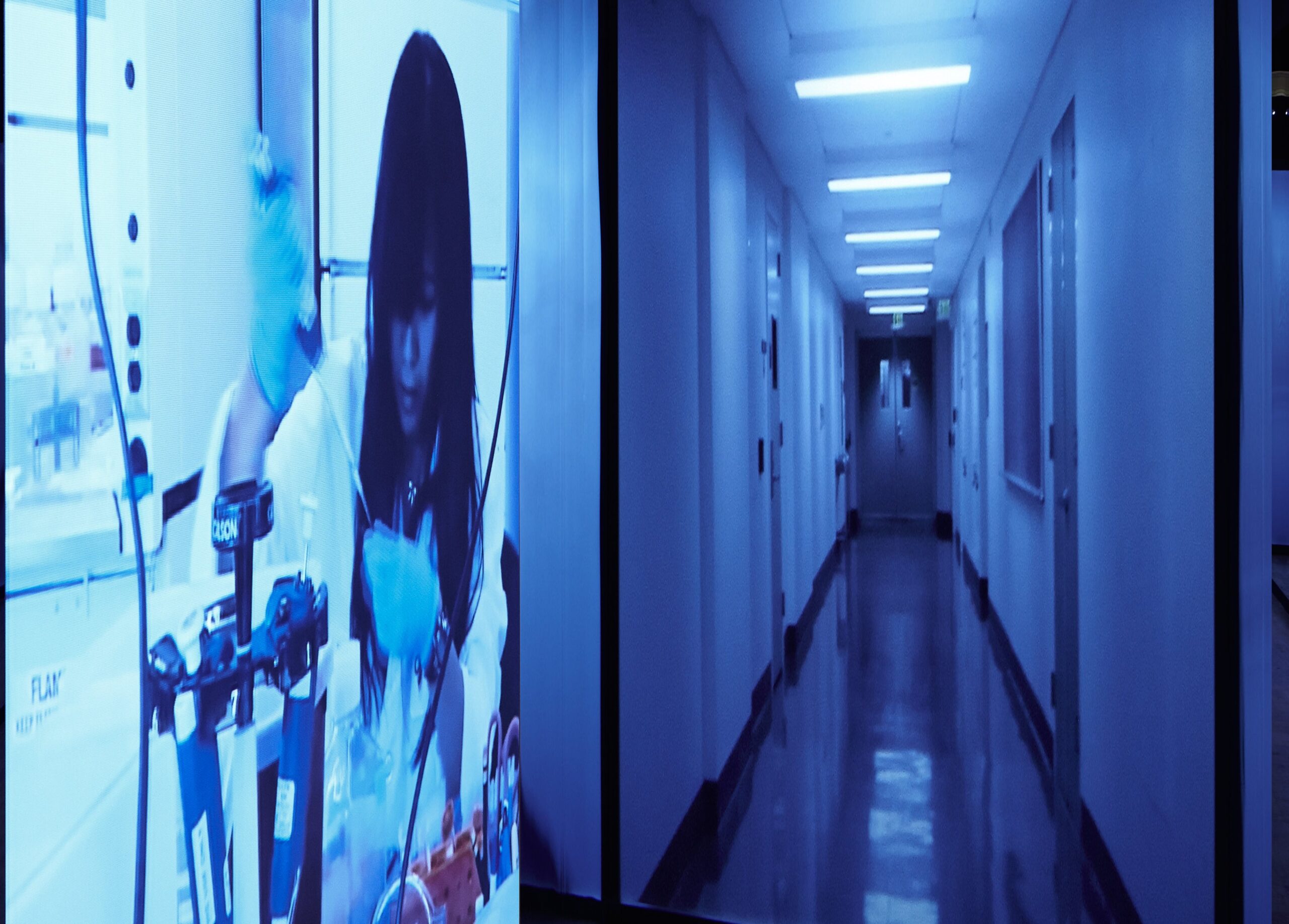
Click to read more →
January 01, 2021
12:00 AM
2008
Curator Rudolph Frieling initiates and coordinates “Lifeⁿ (Life to the power of n),” a collaborative survey of Hershman Leeson’s work in six individual presentations throughout the Bay Area, jointly organized and promoted by the UC Berkeley Art Museum and Pacific Film Archive, the de Young Museum, The Hess Collection, New Langton Arts, SFMOMA, and 01SJ A Global Festival of Art on the Edge at the San Jose Museum of Art.
January 01, 2021
12:00 AM
2009
Awarded a Siggraph Lifetime Achievement Award and the John Simon Guggenheim Memorial Foundation Fellowship.
January 01, 2021
12:00 AM
2010
The film “Strange Culture” debuts at the Berlin, Toronto, and Sundance Film Festivals and receives a New York Times Review. (Click to visit ↗)
January 01, 2021
12:00 AM
Project
Strange Culture
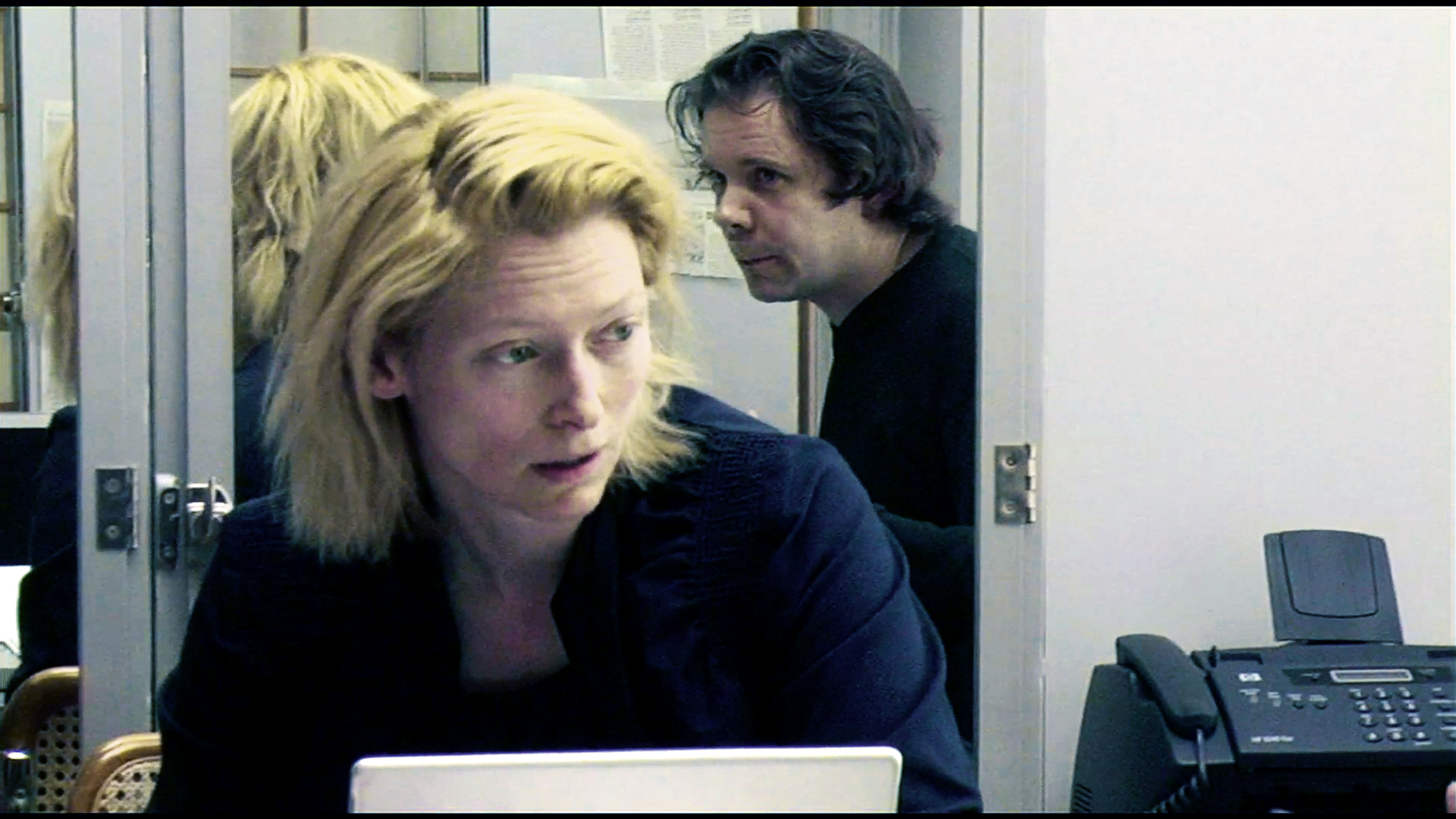
Click to read more →
January 01, 2021
12:00 AM
2010
(ongoing)
The installation “Infinity Engine,” partially commissioned by ZKM | Center for Art and Media Karlsruhe, coalesces when Hershman Leeson collaborates with famous scientists to use Crispr to combine jellyfish and cat genes. Eventually, the piece becomes a functional replica of a genetics lab. Built of modular units, the flexible and scalable environment can be adapted to different locations and reflects current standards in genetic research. In the cubicles, representations and re-enactments of lab tests are on view along with scaffolds of 3D-printed noses and ears; microscopes; and other types of scientific equipment. Wallpaper of hybrid crops and animals and syringes define one room. Another room allows visitors to read files of legal documents related to genetic engineering. Visitors to the installation can participate in a “capture room,” devised in collaboration with Dr. Josiah P. Zaynor, in which reverse facial-recognition software captures the images of the visitors and reveals their DNA origins and adds the information to an evolving composite archetype.
January 01, 2021
12:00 AM
2010
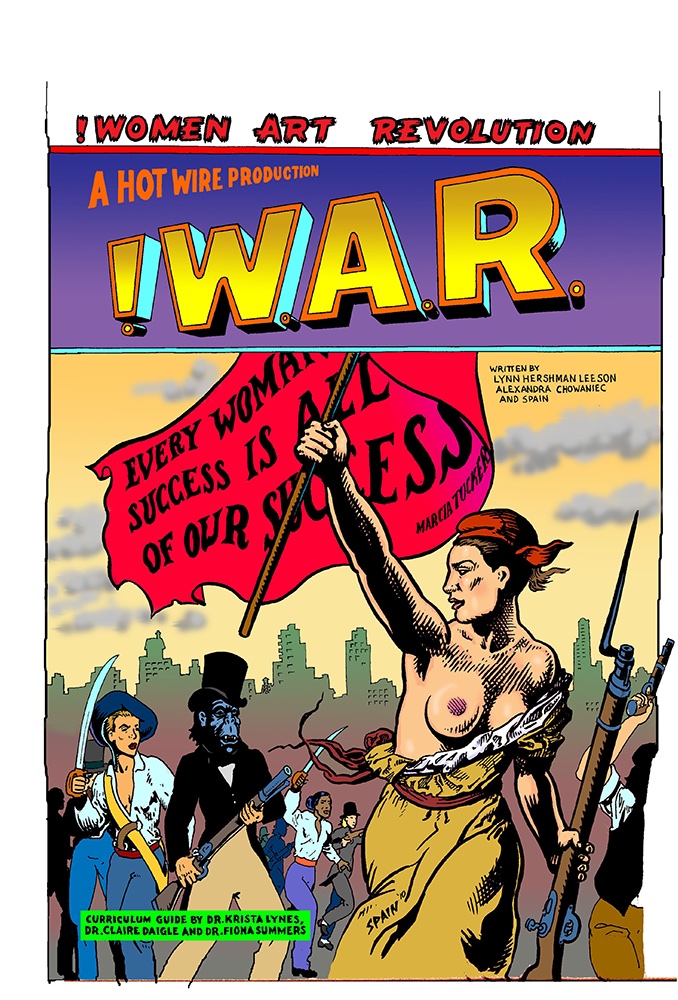
“!Women Art Revolution” is completed. Over 15,000 hours were shot to create the first comprehensive history of feminist art in America, told by the women artists who created the movement. It debuts at The Toronto Film Festival, Sundance Film Festival, and Berlin Film Festival and continues to be widely screened.
January 01, 2021
12:00 AM
2011
Combining film with sculpture, “Home Front” incorporates footage of a married couple into a Gothic-style dollhouse. Through a window, a 33-minute, unedited sequence shows the dissolution of an idyllic domestic scene into a disturbing and violent fight. Another window of the dollhouse features a 26-minute loop of the couple recounting the events. Each person gives a subjective, conflicting interpretation of their dispute.
January 01, 2021
12:00 AM
Project
Home Front
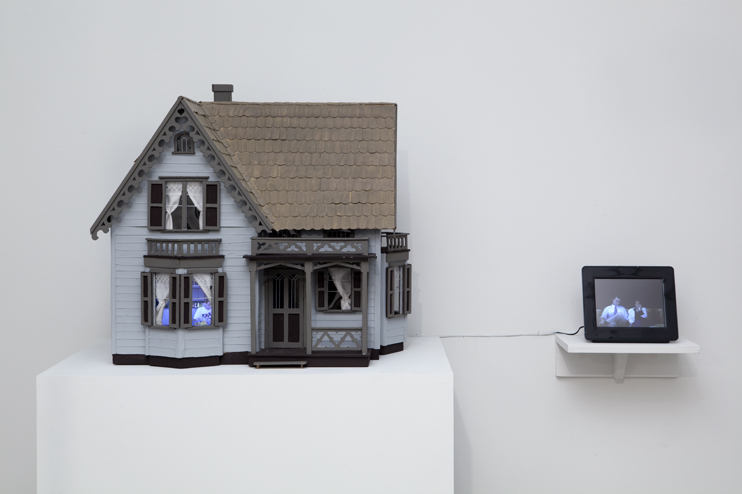
Click to read more →
January 01, 2021
12:00 AM
2012
“!Women Art Revolution” wins first prize at the Montreal International Festival of Films on Art and is hailed by New York’s Museum of Modern Art as one of the three best documentaries of 2012; Holland Cotter of The New York Times calls it “the most comprehensive documentary ever made on the feminist art movement.”
January 01, 2021
12:00 AM
2013
SFMOMA exhibits “The Agent Ruby Files” which includes printed volumes of conversations between Agent Ruby and viewers, drawing on transcripts of user chats since “Agent Ruby” went live on their site over a decade ago. Conversations are chosen based on a selection of frequent semantic tags such as “economy,” “dreams,” “feminism,” “human,” “philosophy,” “politics,” “sexuality,” and “technology.”
January 01, 2021
12:00 AM
2013
(ongoing)
Hershman Leeson begins to print aestheticized representations of images from the internet, such as “August Moon,” that reveal a global obsession with representations of violence.
January 01, 2021
12:00 AM
Project
August Moon
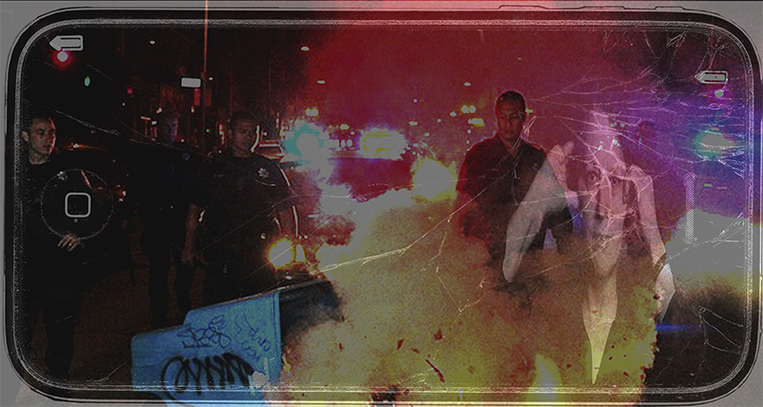
Click to read more →
January 01, 2021
12:00 AM
2014
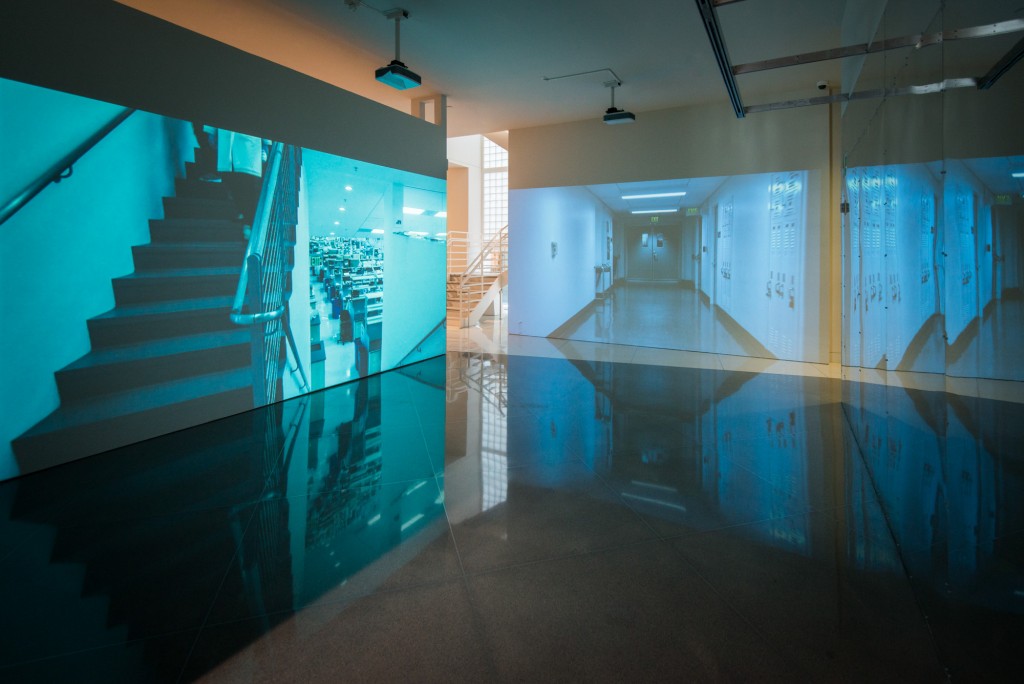
Hershman Leeson’s first retrospective, “Civic Radar,” opens at ZKM, the Center for New Media in Karlsruhe, Germany. It is curated by Peter Weibel and includes a comprehensive catalog. Early the following year, in a review in The New York TImes, Holland Cotter implores Museums to bring “Civic Radar” to the United States. Due to the show, “Breathing Machines,” once deemed NOT ART in Berkeley, are now part of the permanent collections of MoMA NY, Cleveland Museum, and the Dallas Art Museum. (Click for more ↗️)
January 01, 2021
12:00 AM
2014
The Digital Art Museum in Berlin recognizes Hershman Leeson’s work with a d.velop digital art award (ddaa) for lifetime achievement in the field of new media.
January 01, 2021
12:00 AM
2014
Hershman Leeson is named one of "21 Leaders for the 21st Century" by Women eNews.
January 01, 2021
12:00 AM
2014
“Past Tense” features the projection of photographs tagged “endangered” from the online image-sharing platform Flickr. Regularly updated, the feed centers different forms of destruction, obsolescence, demolition, and extinction. An iPhone installed on a nearby pedestal surreptitiously photographs viewers and then integrates the snapshots into the image stream, instigating the idea that the viewer’s time is also fragile and endangered.
January 01, 2021
12:00 AM
Project
Past Tense
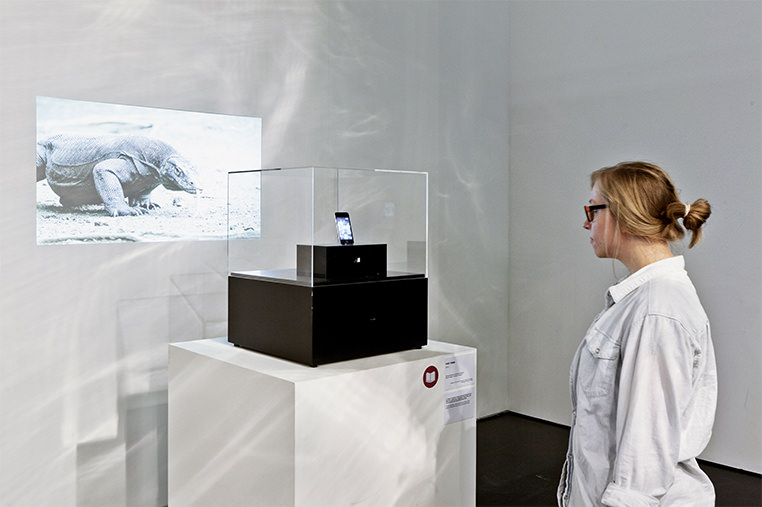
Click to read more →
January 01, 2021
12:00 AM
2016
Hershman Leeson’s monograph “Civic Radar” is published by Hatje Cantz to great acclaim. Holland Cotter writes it is “one of the indispensable art books of 2016” in The New York Times. (Click to read ↗️)
January 01, 2021
12:00 AM
2016
Hershman Leeson’s work is shown in the “Dreamlands” show at the Whitney Museum of American Art alongside Ian Cheng, Dora Budor, and Ivana Bašić, all artists under 40.
January 01, 2021
12:00 AM
2017
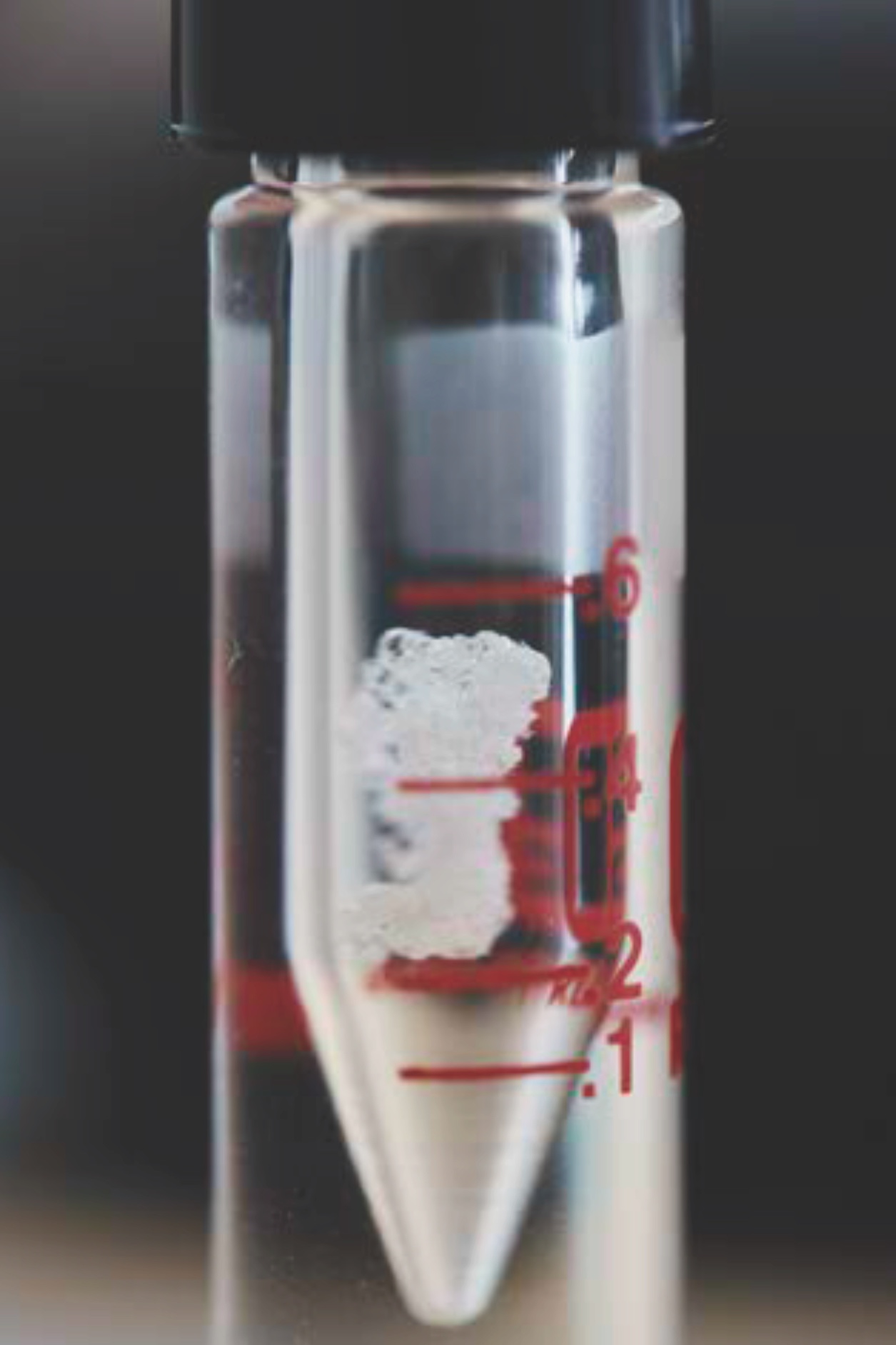
Working with Dr. Thomas Huber at Novartis, two antibodies are created. One is the “LynnHershman” antibody (which bound with too many other cells) and the other is “(Rob)Erta” (which wouldn’t bind with any other cells). Roberta’s antibody continues to be used in research.
January 01, 2021
12:00 AM
2017
Rhizome adds “Tillie, the Telerobotic Doll” (1995) and “CyberRoberta” (1996)—two dolls with webcams for eyes, both broadcasting images of gallery goers to viewers online—to its Net Art Anthology, a digital compendium of classic artworks on and about the internet. (Click to visit ↗)
January 01, 2021
12:00 AM
2017
Hershman Leeson receives a USA Artist Fellowship, the San Francisco Film Society’s “Persistence of Vision” Award, and the College Art Association’s Lifetime Achievement Award.
January 01, 2021
12:00 AM
2017
In Art News, Hershman Leeson is quoted as saying “People say I’ve gotten rediscovered, but there’s no re-. I was never discovered before two and a half years ago.” (Click to read ↗️)
January 01, 2021
12:00 AM
2017
“VertiGhost,” a multimedia installation, debuts with simultaneous installations at The Legion of Honor and the de Young museums in San Francisco. A web component incorporates live footage of viewers from the Legion of Honor by digitally inserting and implicating them into the narrative at the de Young. It is inspired by, and reinterprets, Alfred Hitchcock’s film “Vertigo” (1958), which shot key scenes at the Legion of Honor. A multi-part installation about identity and authenticity, “VertiGhost” explores the difficulty of distinguishing between reality and fiction.
January 01, 2021
12:00 AM
Project
VertiGhost
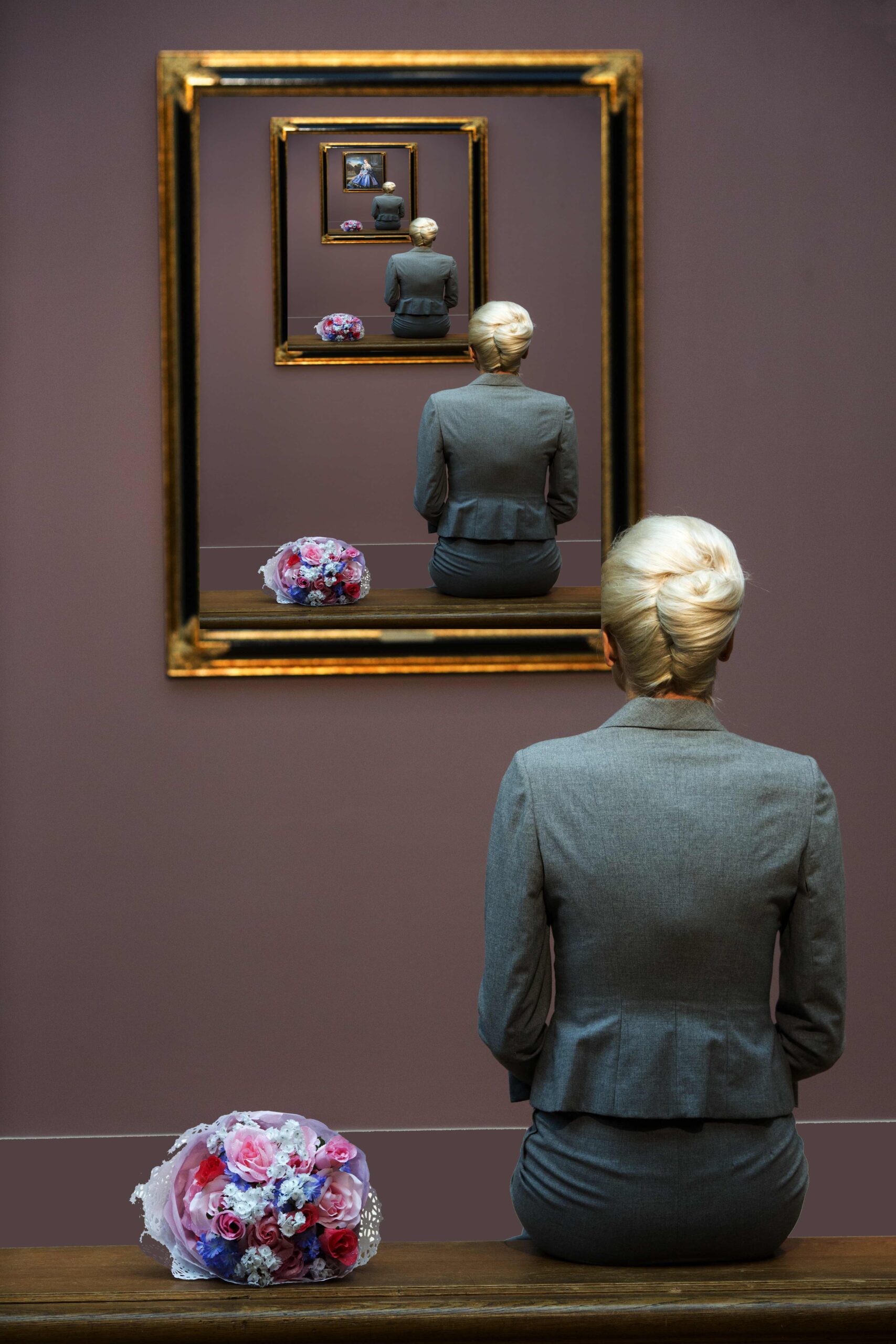
Click to read more →
January 01, 2021
12:00 AM
2018
KW Institute for Contemporary Art restages the Dante Hotel installation at Berlin’s Novalis Hotel. The new iteration offers an update to the 1972 version by including belongings and personal objects such as iPhones and Macbooks from someone who would be Roberta’s age now. Audience DNA was collected from visitors’ used paper cups to form a forensic demographic display of the visitors, which was presented at the end of the exhibition.
January 01, 2021
12:00 AM
2019
“Shadow Stalker,” a three-part work, debuts in the “Manual Override” exhibit at The Shed in New York City. It is a “live” interactive installation using algorithms, performance, and projections to make visible private Internet systems such as Predictive Policing that are increasingly used by law enforcement and promote racial profiling.
January 01, 2021
12:00 AM
Project
Shadow Stalker
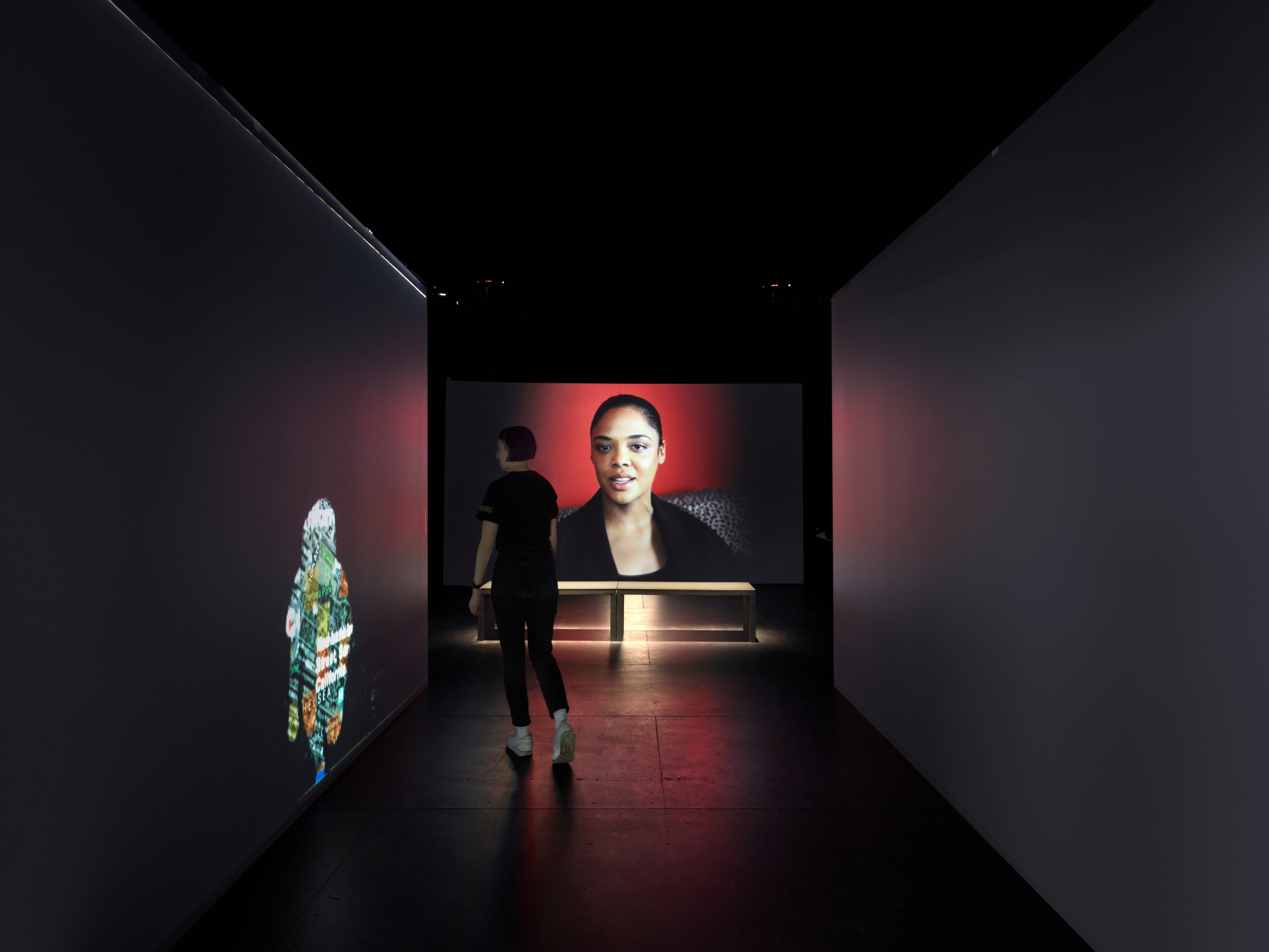
Click to read more →
January 01, 2021
12:00 AM
2019
Collaborating with the Harvard genetics professor George Church, who has been called “the father of synthetic biology,” Hershman Leeson translates some of the images, videos, the “Anti-bodies” work from 2017, and texts in her archive (including the Electronic Diaries) into binary code that was then converted to DNA, which has generated interest as a long-term information storage system. Hershman Leeson is quoted as saying “DNA is the medium of our time.” (Click to read more ↗️)
January 01, 2021
12:00 AM
2020
“Shadow Stalker” shows at the de Young Museum in San Francisco and receives the Prix Ars Electronica Golden Nica distinguished mention.
January 01, 2021
12:00 AM
2021
The New Museum in New York City presents “Lynn Hershman Leeson: Twisted,” curated by Margot Norton with a catalog of the survey.
January 01, 2021
12:00 AM
2021
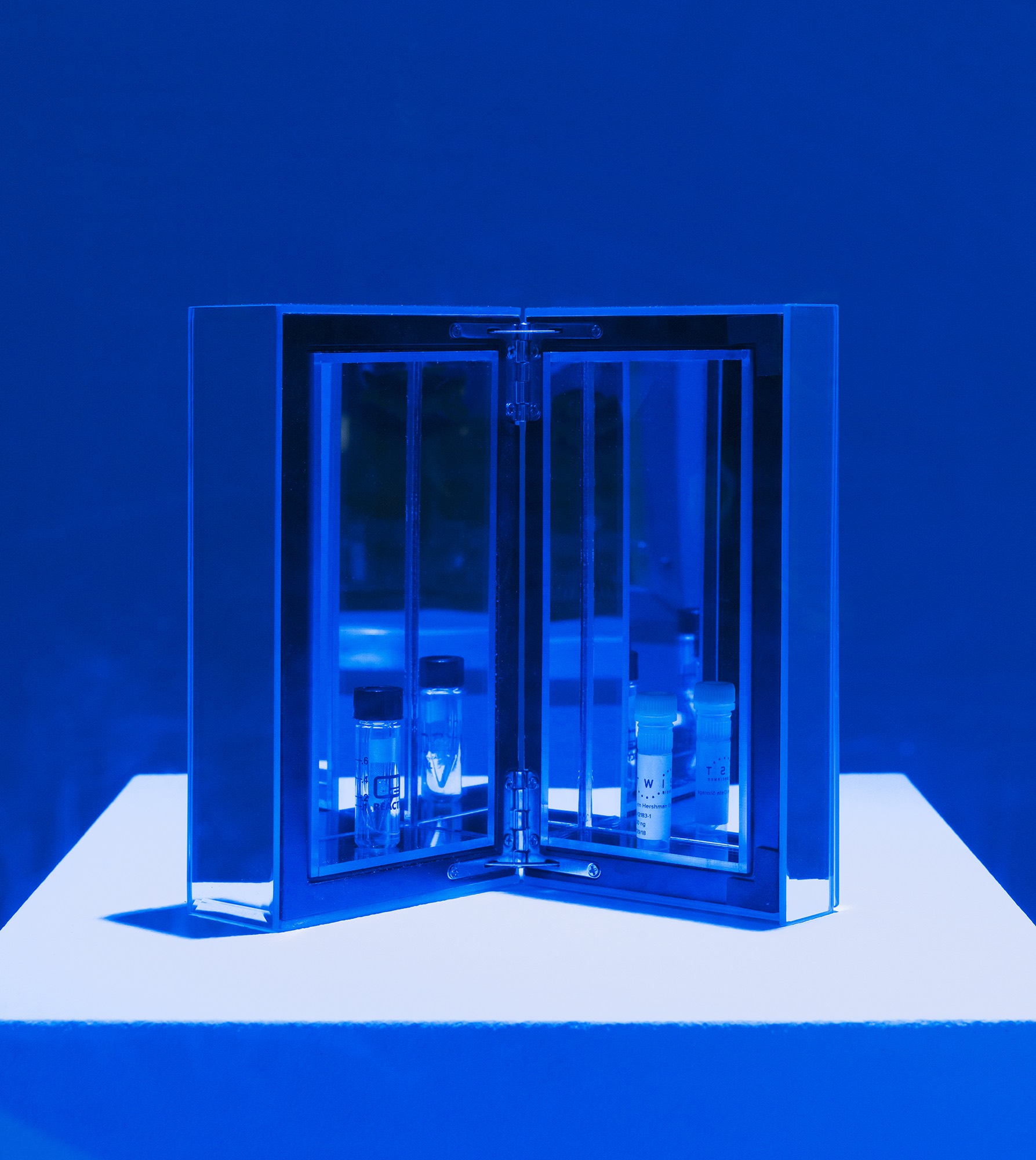
“Room #8,” an installation featuring the two antibodies and DNA conversion, is collected by SFMOMA and ZKM Center for Art and Media in Germany.
January 01, 2021
12:00 AM
2022
The Gwangju Biennal commissions “Twisted Gravity.” It is created in collaboration with Dr. Thomas Huber of Novartis and The Wyss Institute at Harvard for the eradication of plastic from water. It consists of six pedestals supporting LED-lit, plastic panels with etched figures. In addition to being artworks, the pieces double as portable purification systems capable of processing and converting contaminated water into drinkable water, one liter per minute.
January 01, 2021
12:00 AM
Project
Twisted Gravity
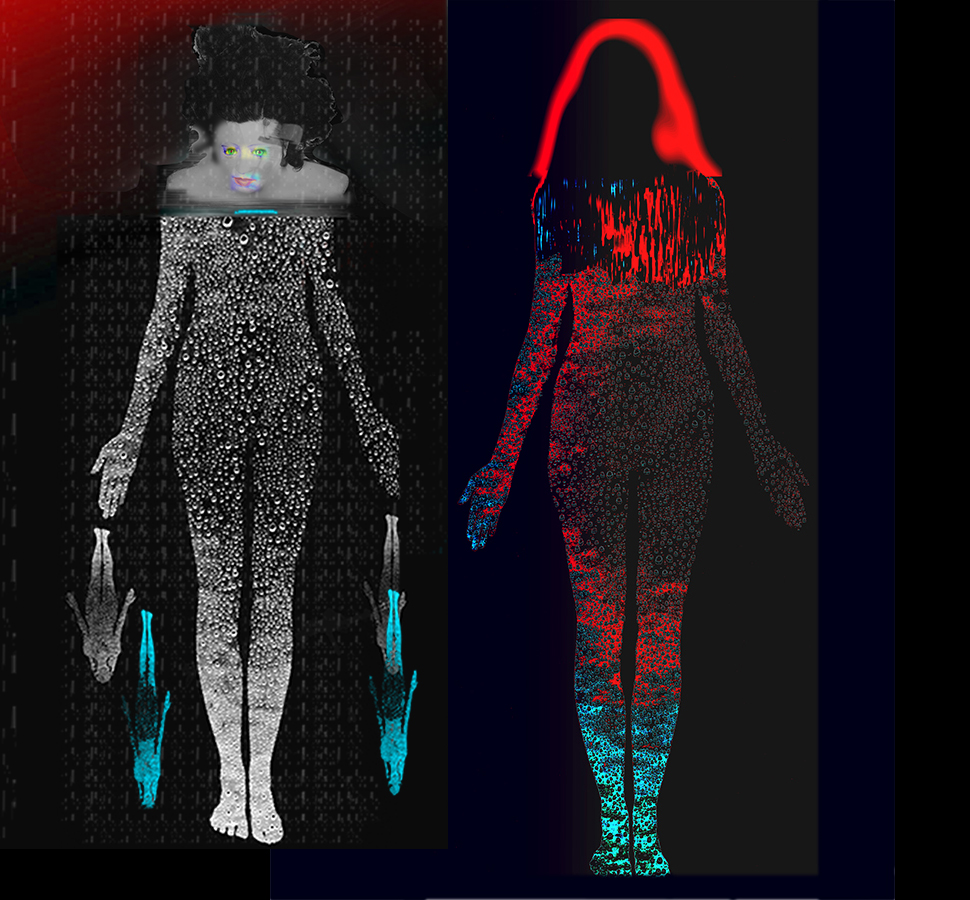
Click to read more →
January 01, 2021
12:00 AM
2022
“Logic Paralyzes The Heart” debuts at the 59th International Art Exhibition of La Biennale di Venezia, “The Milk of Dreams.” The piece centers on a 61-year-old cyborg who reconsiders why humans do not listen to her predictions. The work is awarded a special mention from the jury and it is presented with the following motivation: “for indexing the cybernetic concerns that run through the exhibitions in an illuminating and powerful way that also includes visionary moments of her early practice that foresaw the influence of technology in our everyday lives.”
January 01, 2021
12:00 AM
Project
Logic Paralyzes the Heart
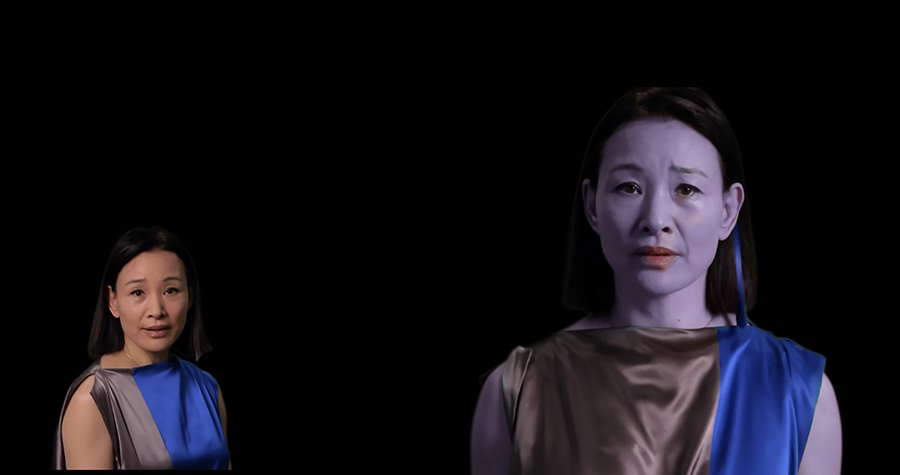
Click to read more →
January 01, 2021
12:00 AM
2023
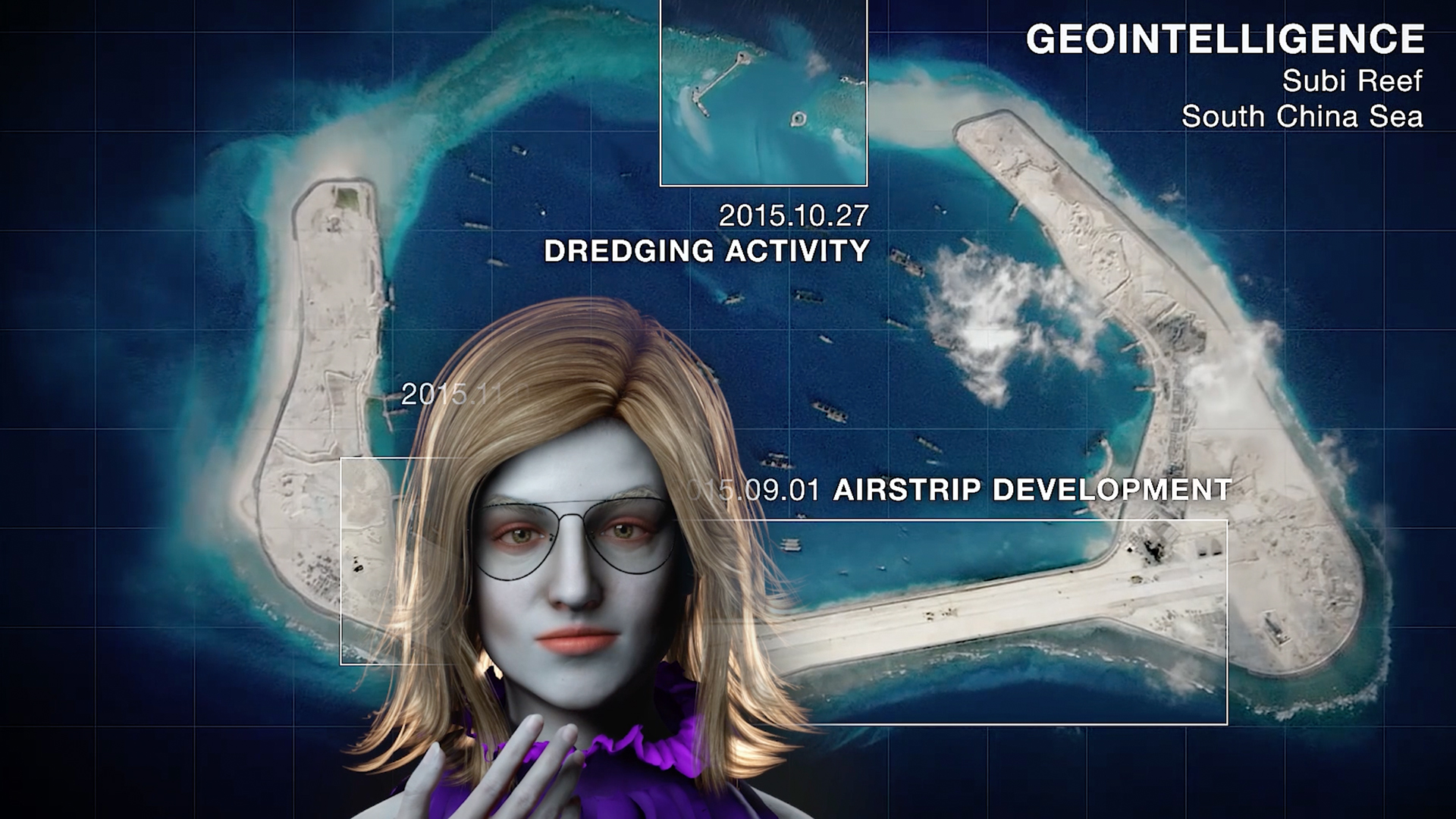
“Cyborgian Rhapsody” debuts with a script written entirely by a Chatbot who also performs in it.
January 01, 2021
12:00 AM
2023
SFMOMA acquires its first NFT, created by Hershman Leeson titled “Final Transformation #2” from 2022. Its title references the last words spoken by the actress Tilda Swinton in Hershman Leeson’s film, “Conceiving Ada,” from 1997. (Click to visit ↗)
January 01, 2021
12:00 AM
2023
Despite having created one of the first AI chatbots in 1998, Hershman Leeson is omitted from Time Magazine’s 100/AI issue.
January 01, 2021
12:00 AM
2023
Pratt Institute of Art in NY awards Hershman Leeson an Honorary Doctorate; Creative Capital awards her its Distinguished Artist Award.
January 01, 2021
12:00 AM
2024
The Museum of Modern Art in New York City organizes a retrospective of Hershman Leeson’s films, June 5-15.
January 01, 2021
12:00 AM
2024
Hershman Leeson is honored with tributes given by The Kitchen in New York City, The Cantor Arts Center at Stanford University, and the Berkeley Art Museum and Pacific Film Archive.
January 01, 2021
12:00 AM
2024
Among five solo exhibitions planned for this year, Alfred Weidinger is organizing a large-scale solo exhibition at the Francisco Carolinum Museum in Linz, Austria. It will highlight a portion of Hershman Leeson’s over 4,500 works, including pieces that have never been shown.
January 01, 2021
12:00 AM
more coming soon...
January 01, 2021
12:00 AM